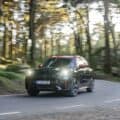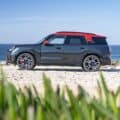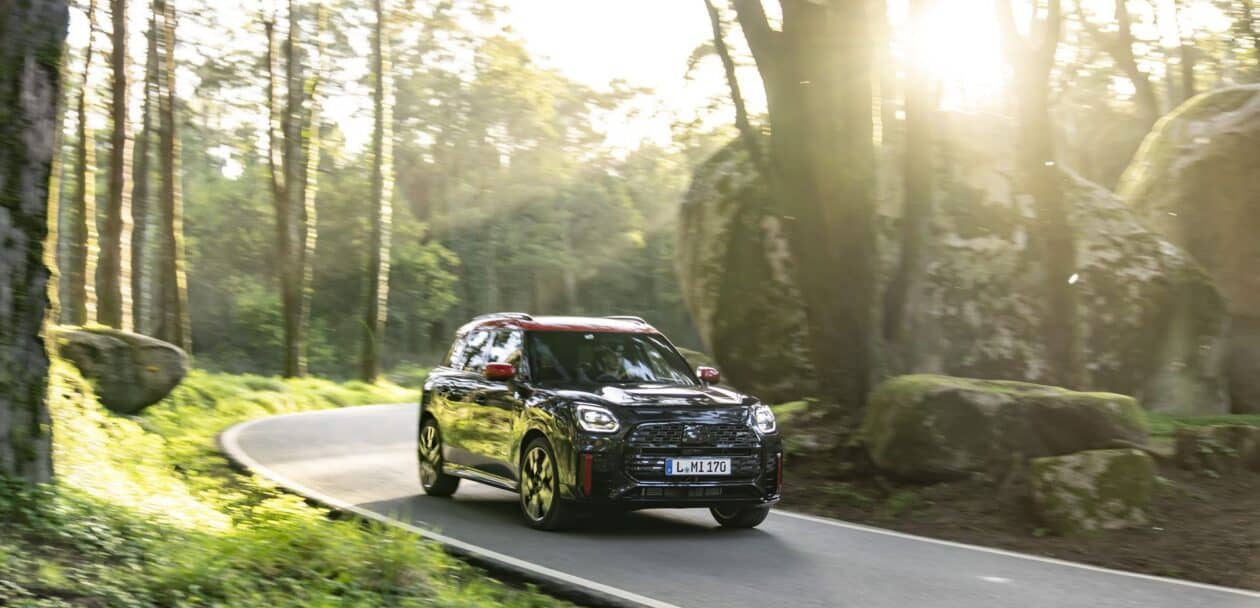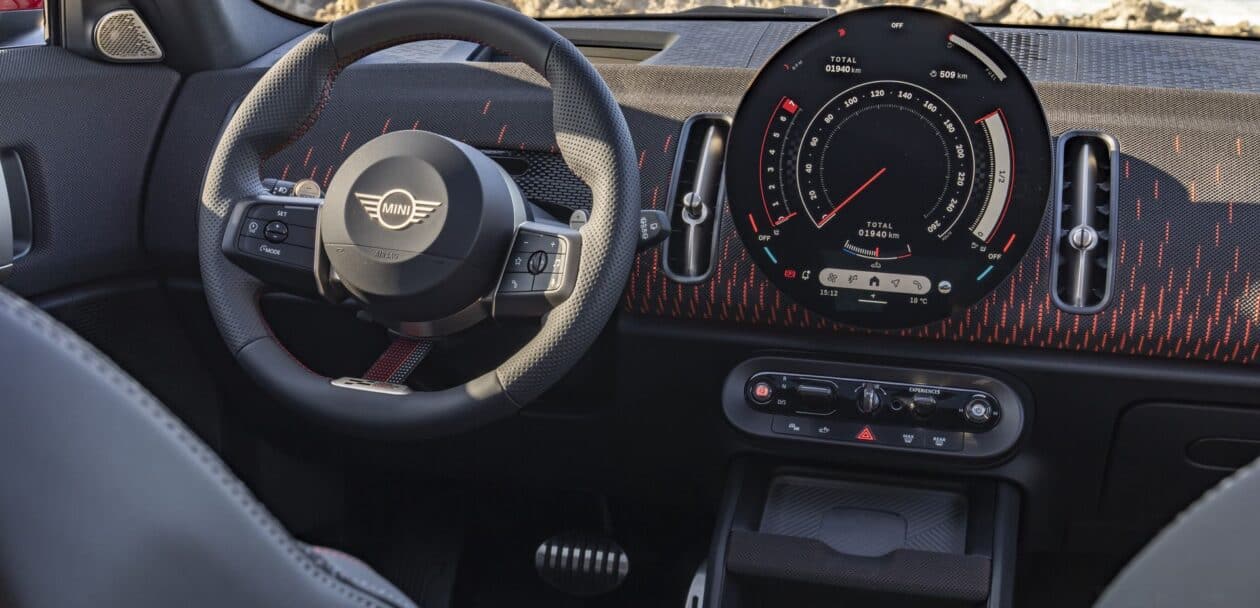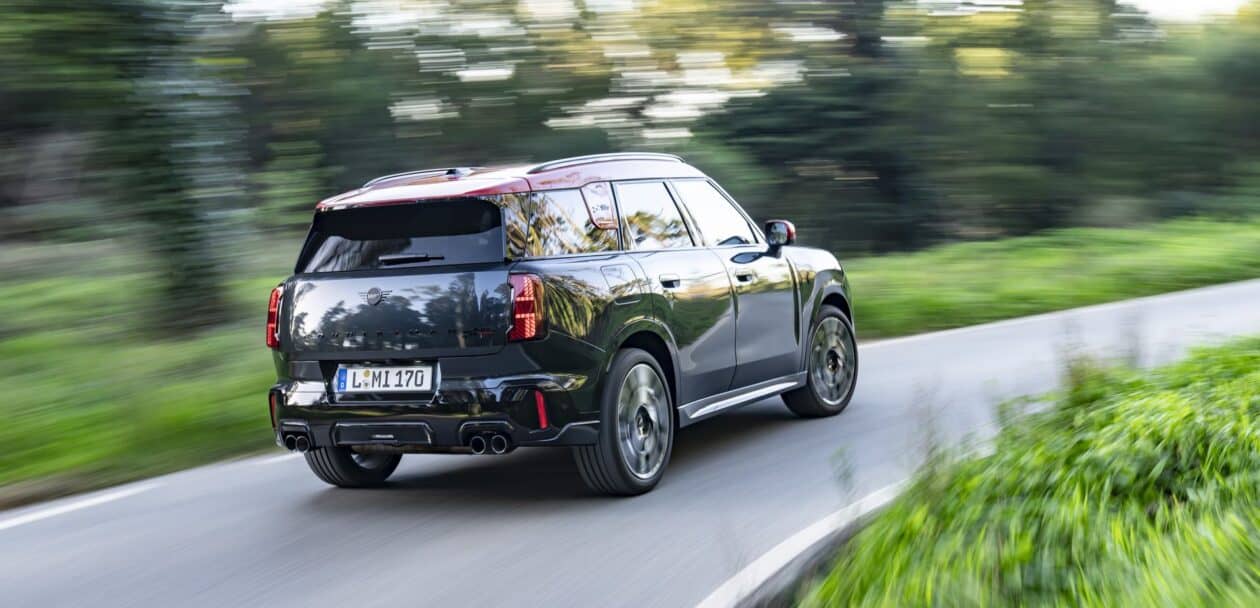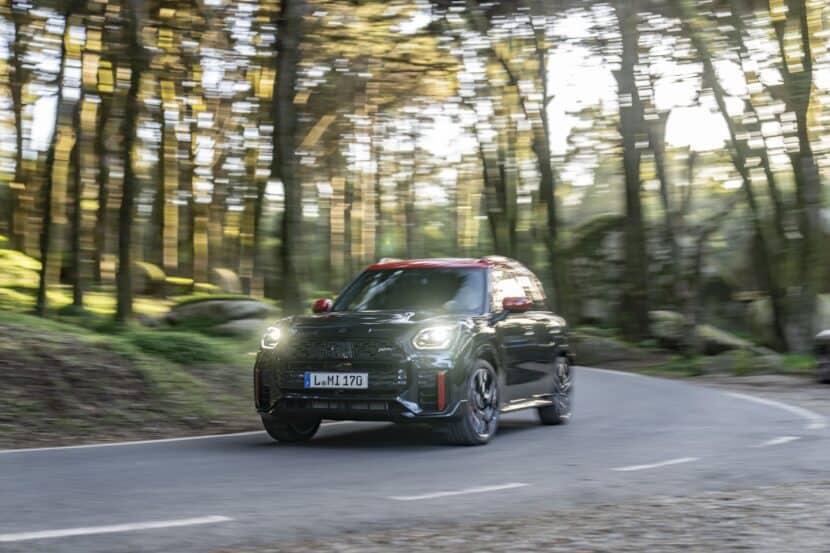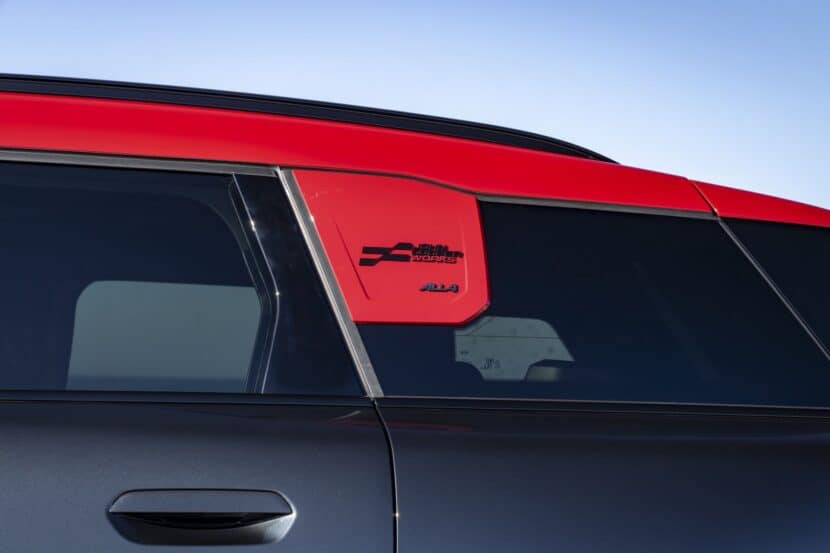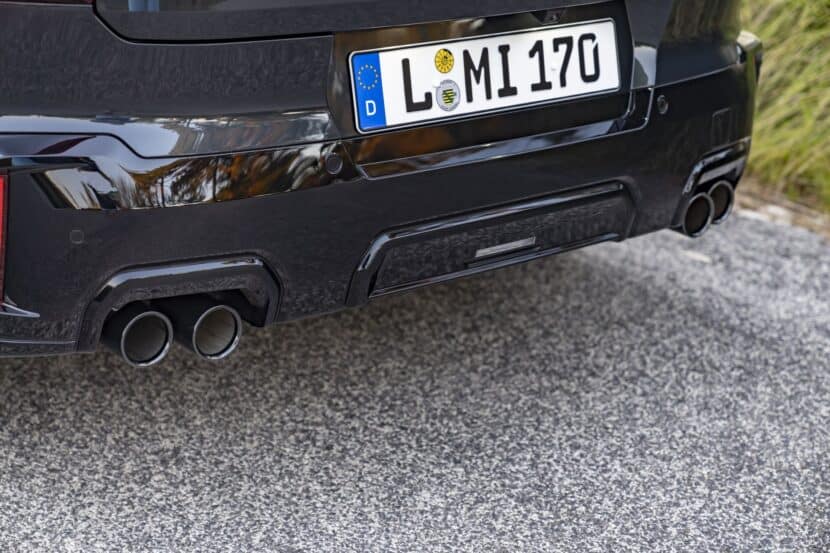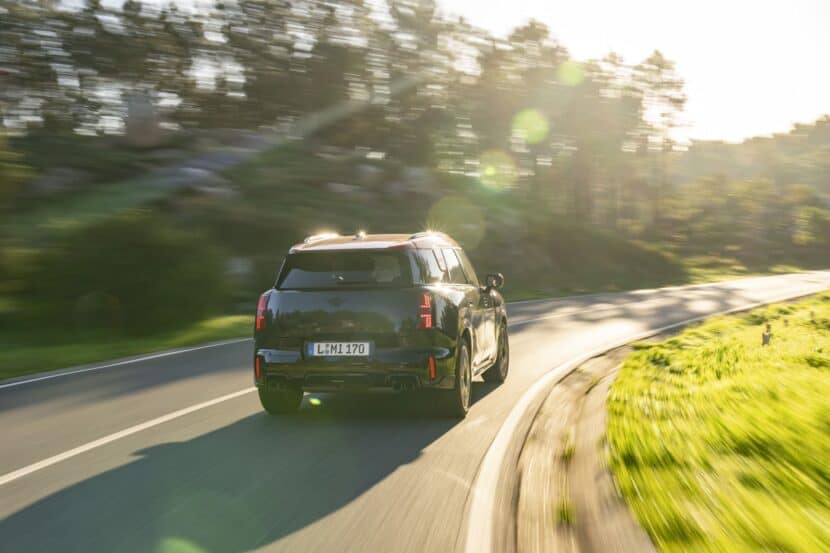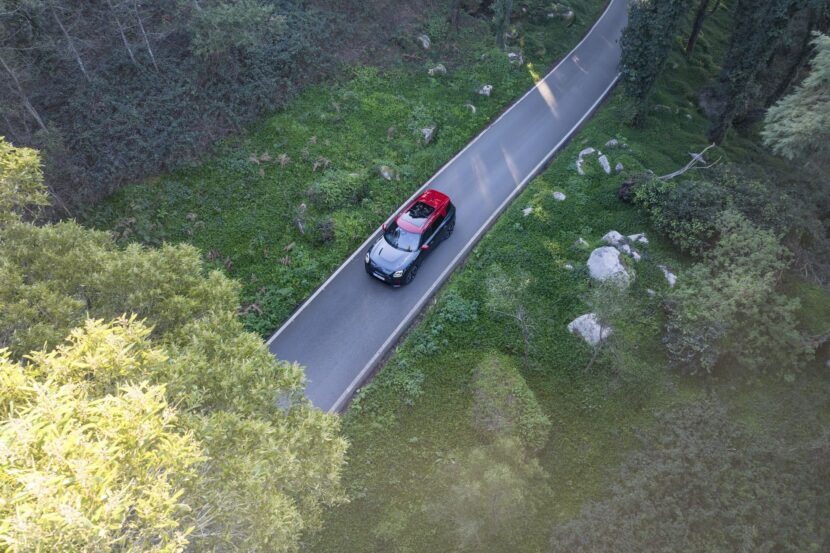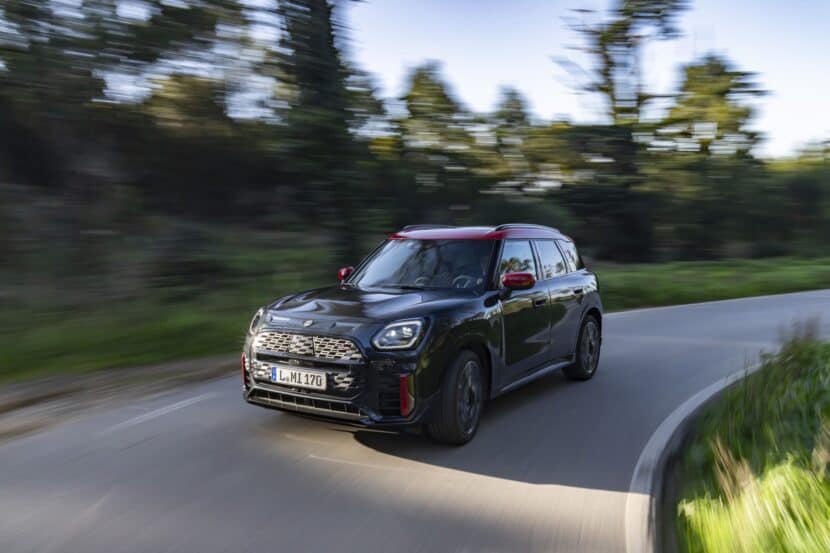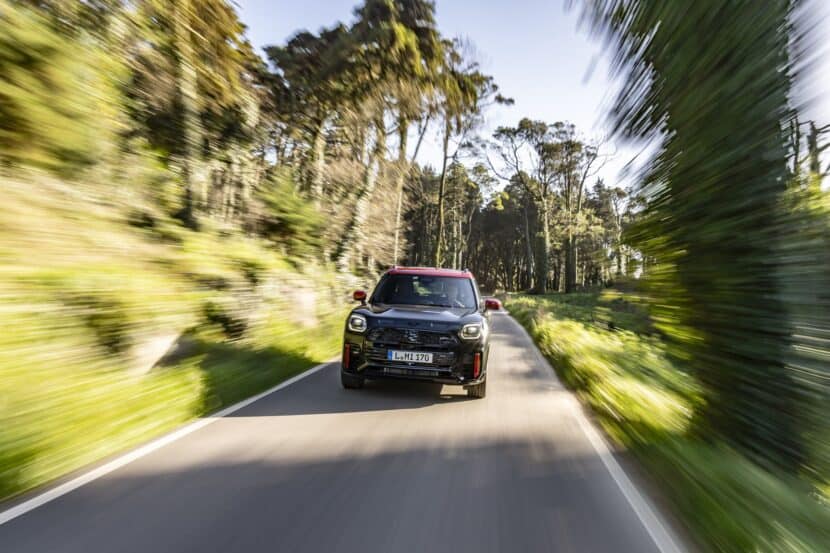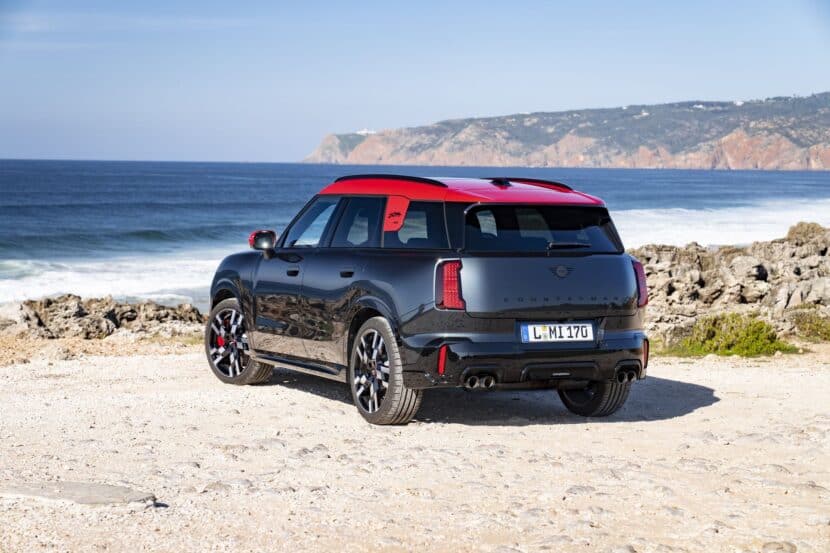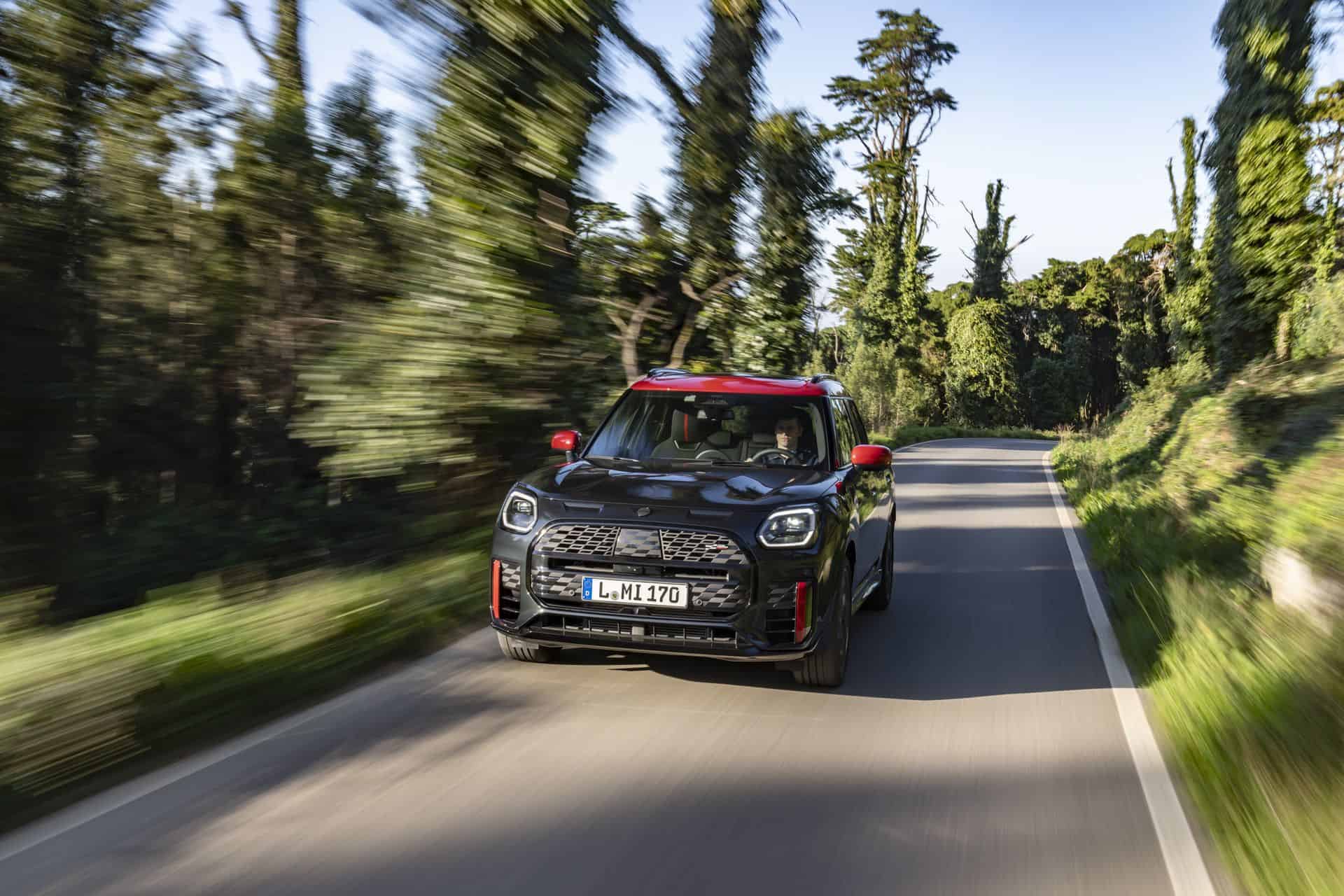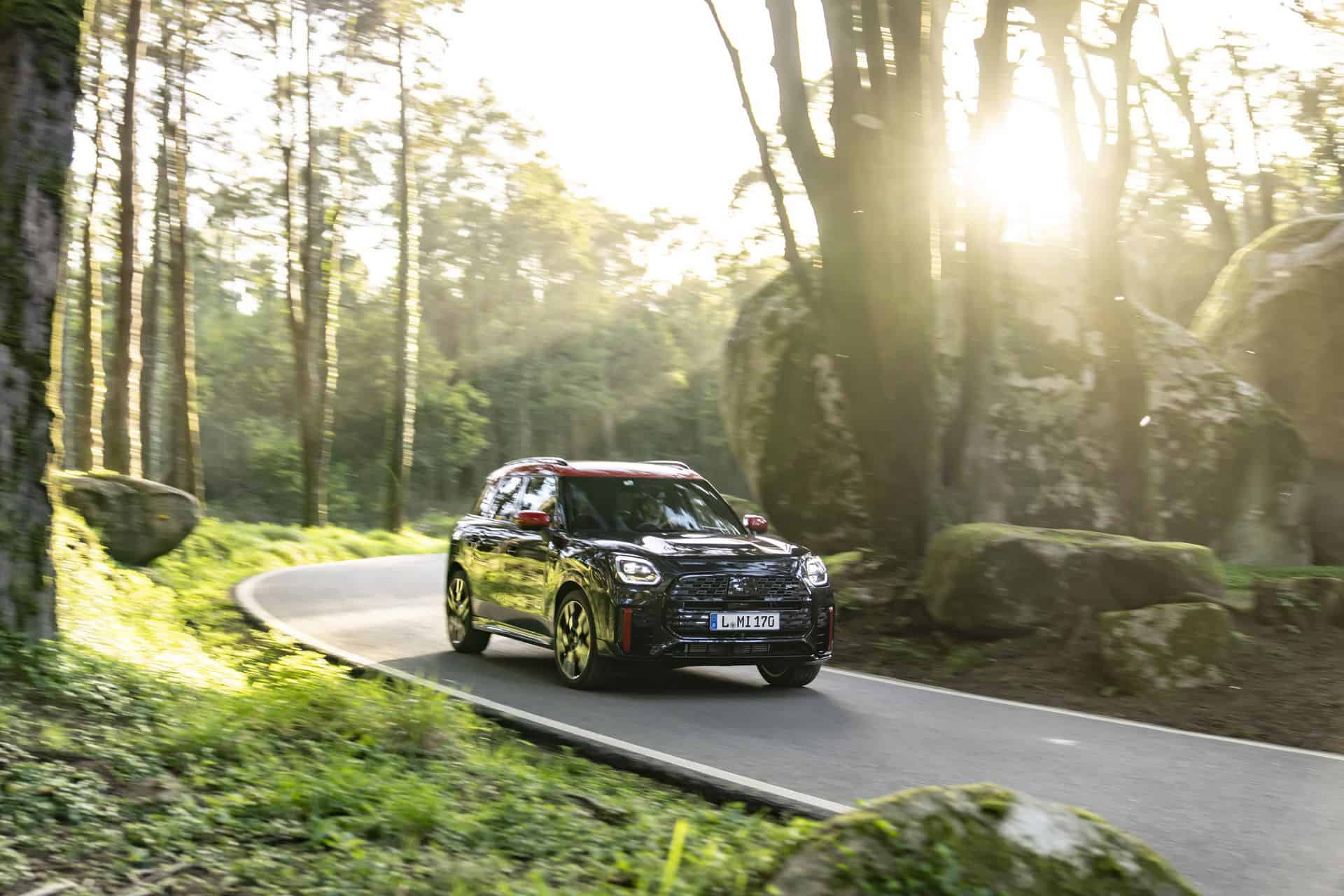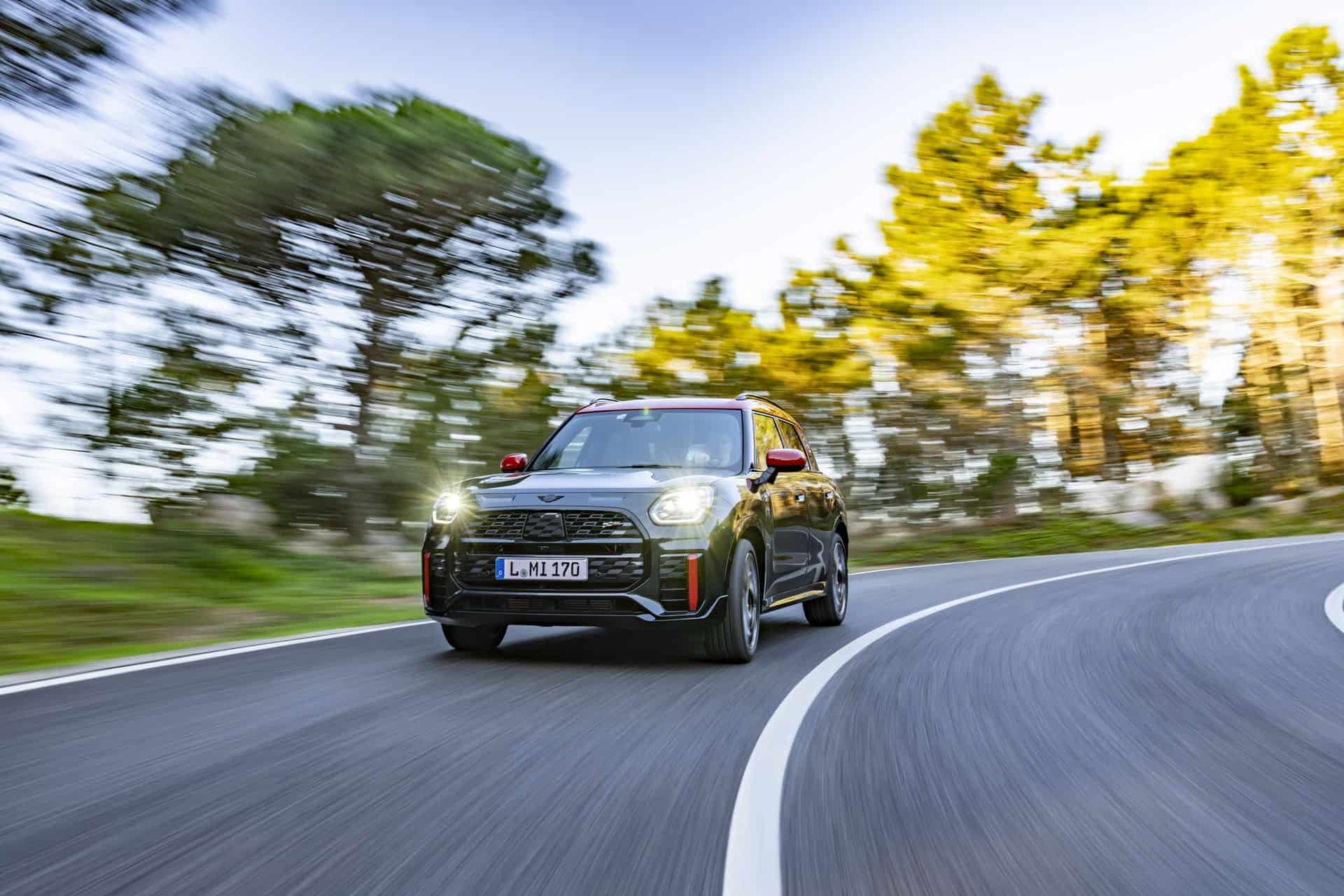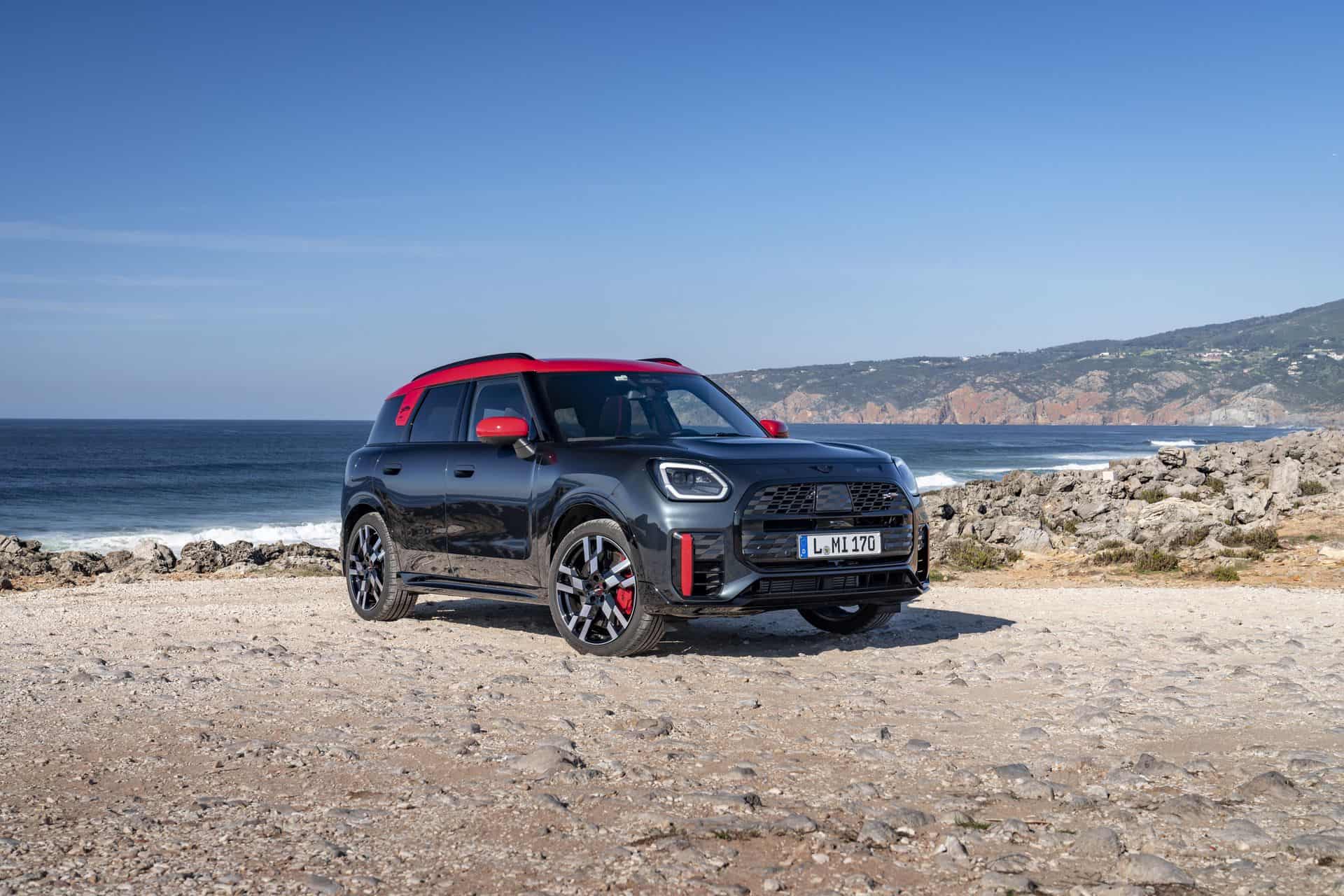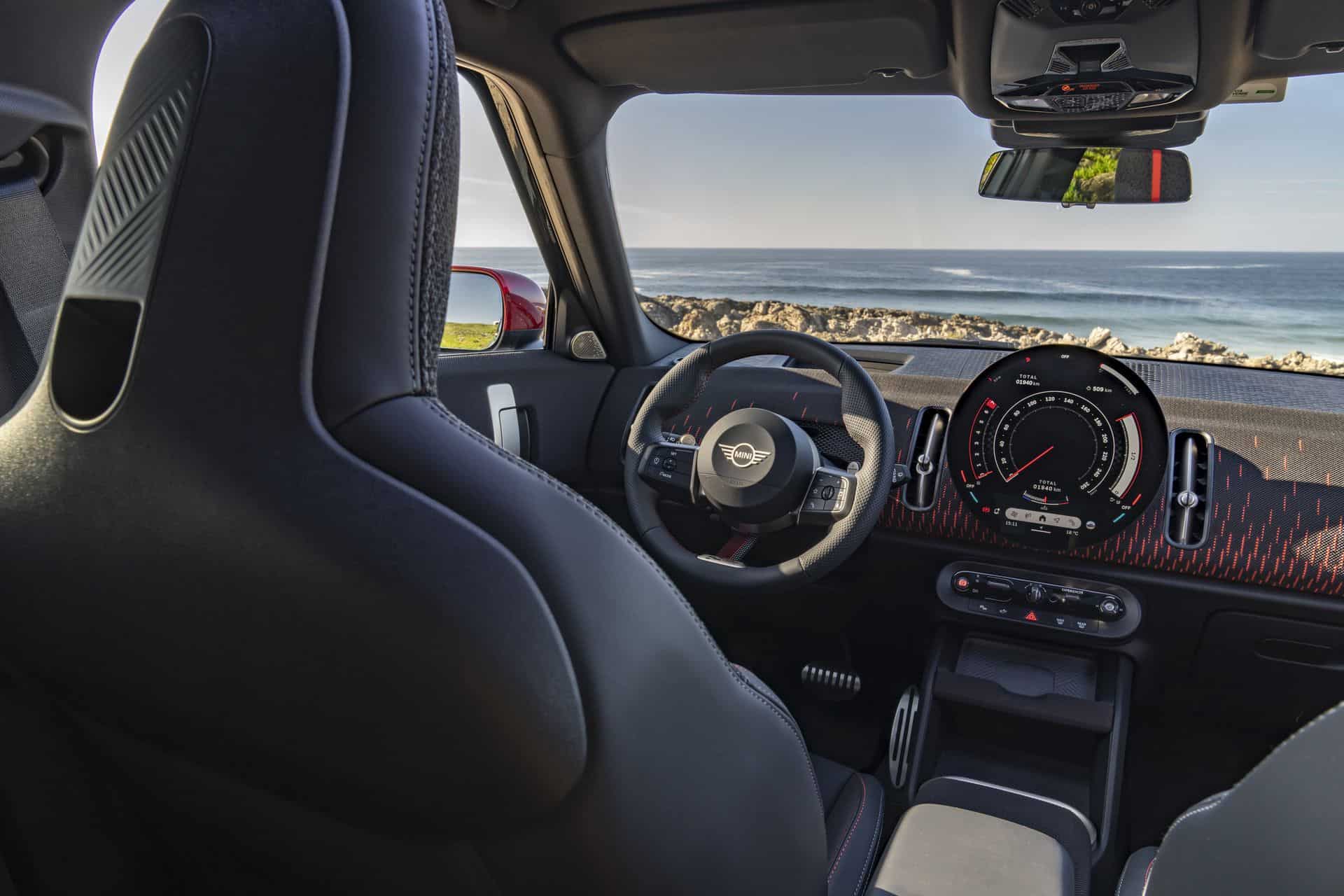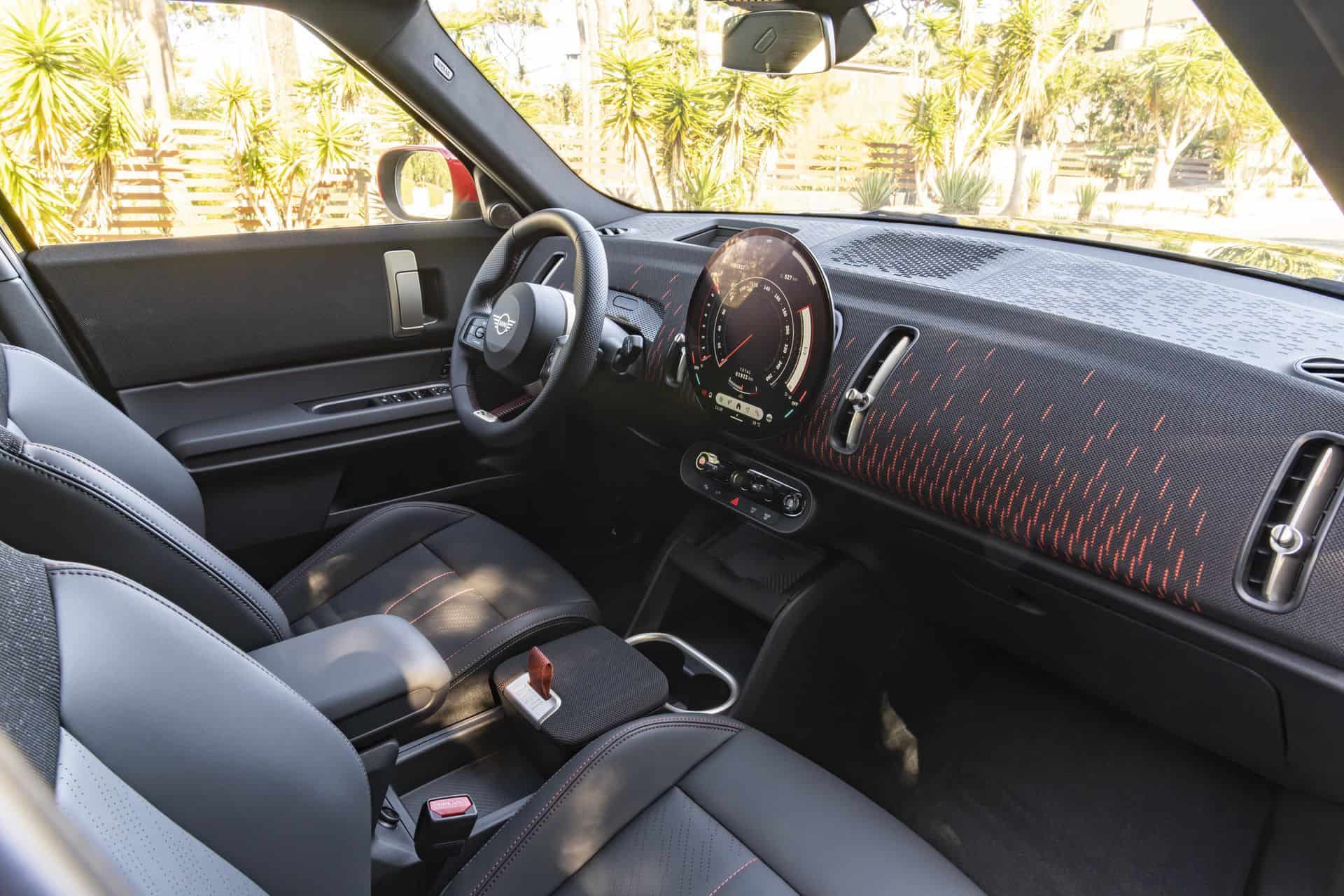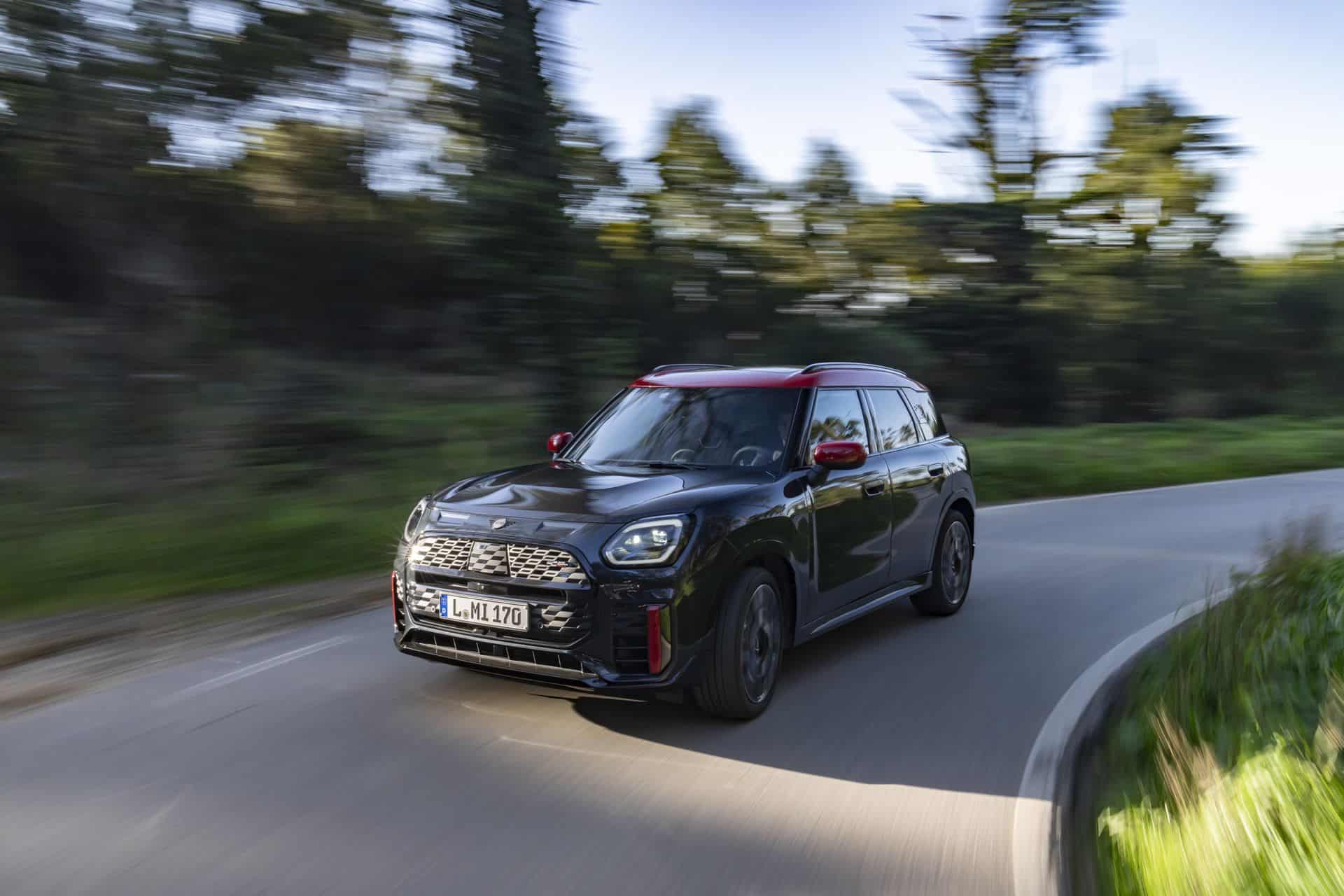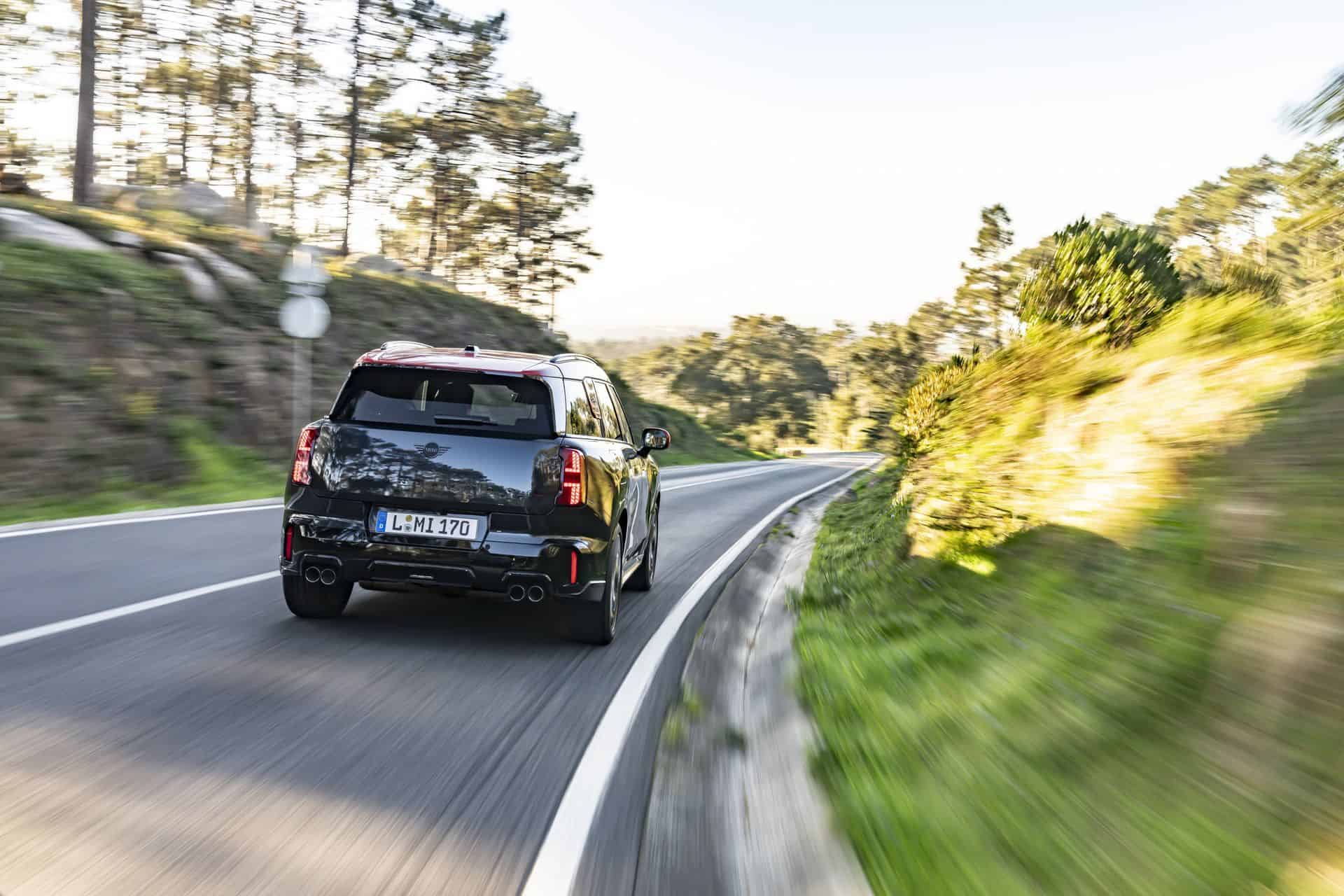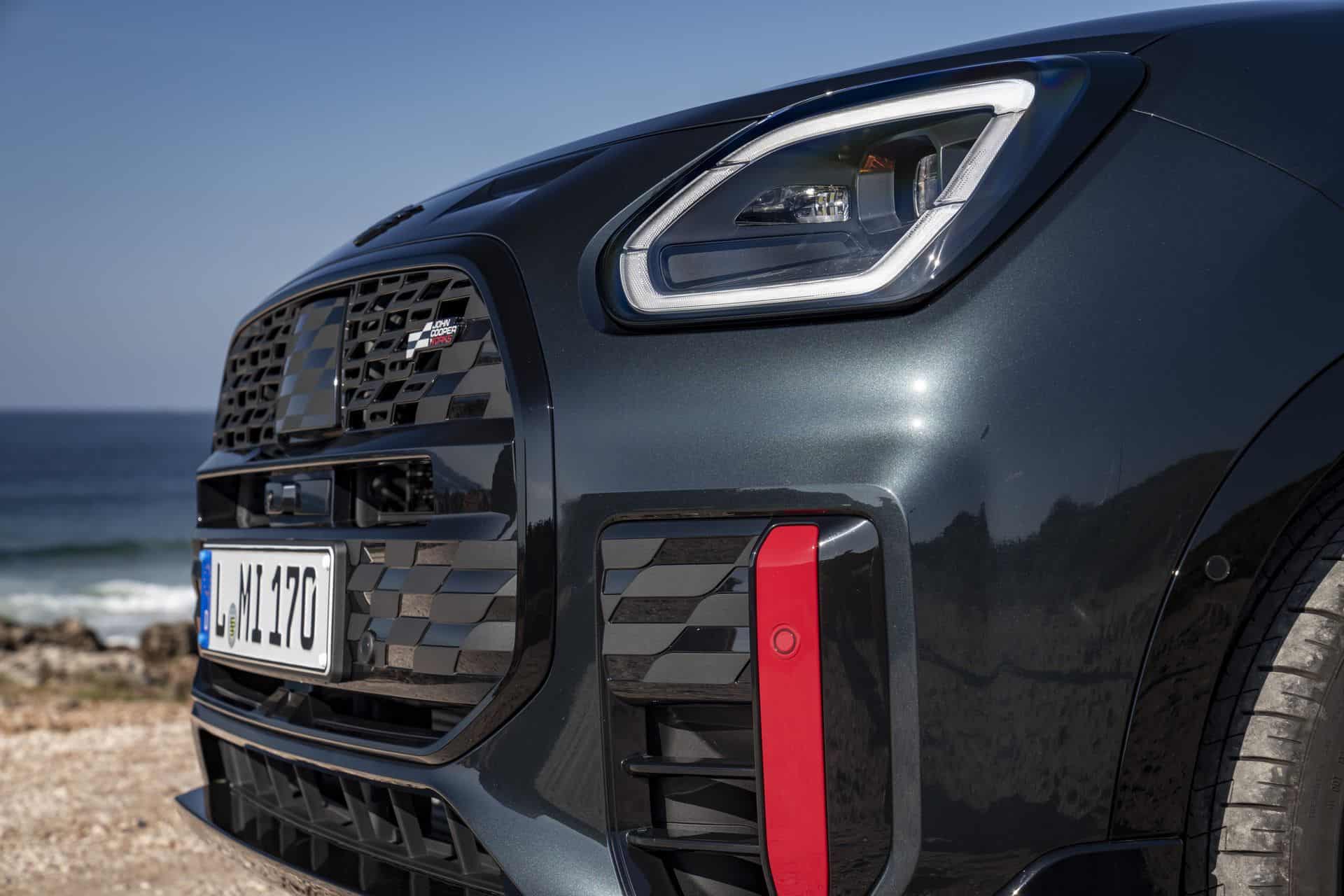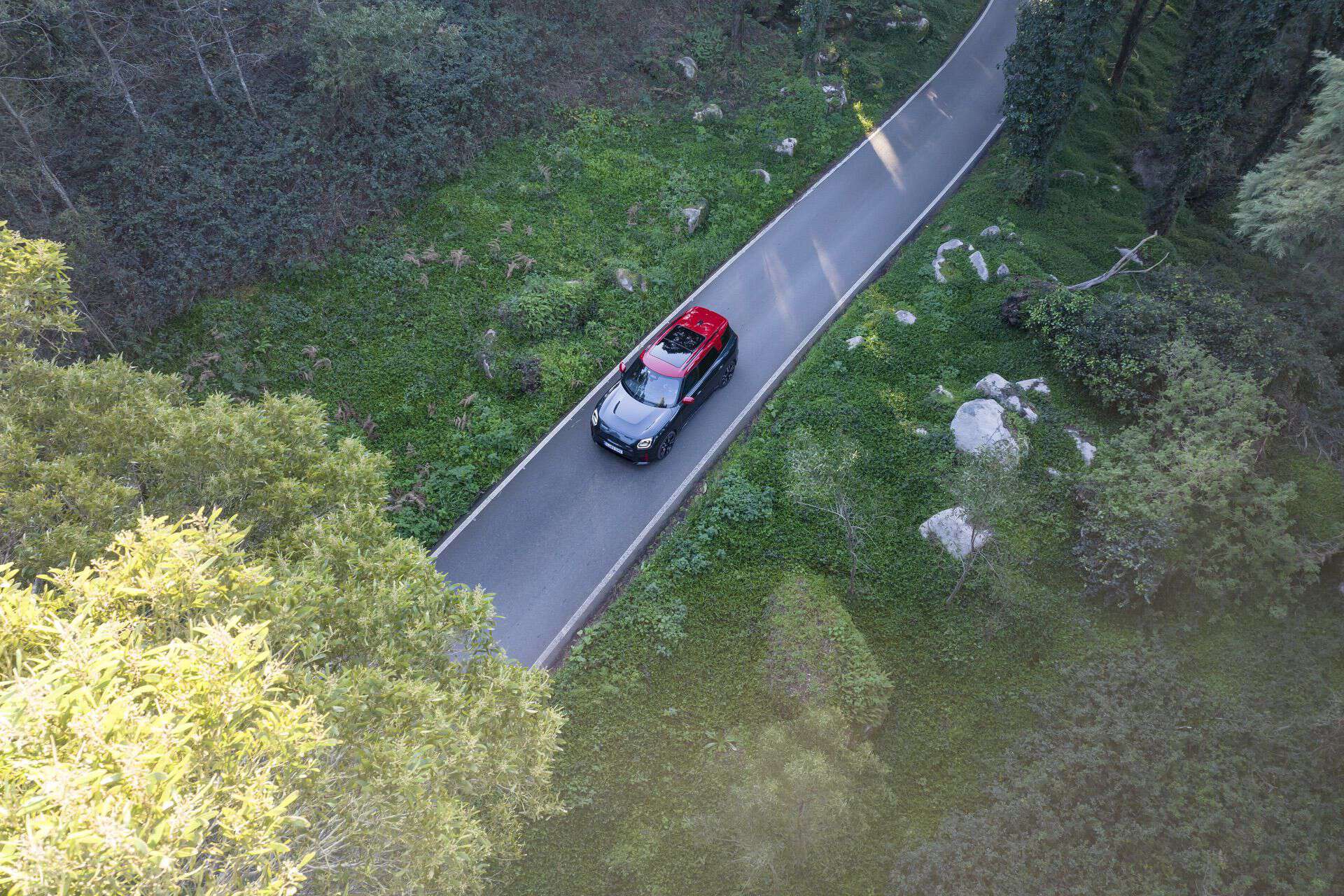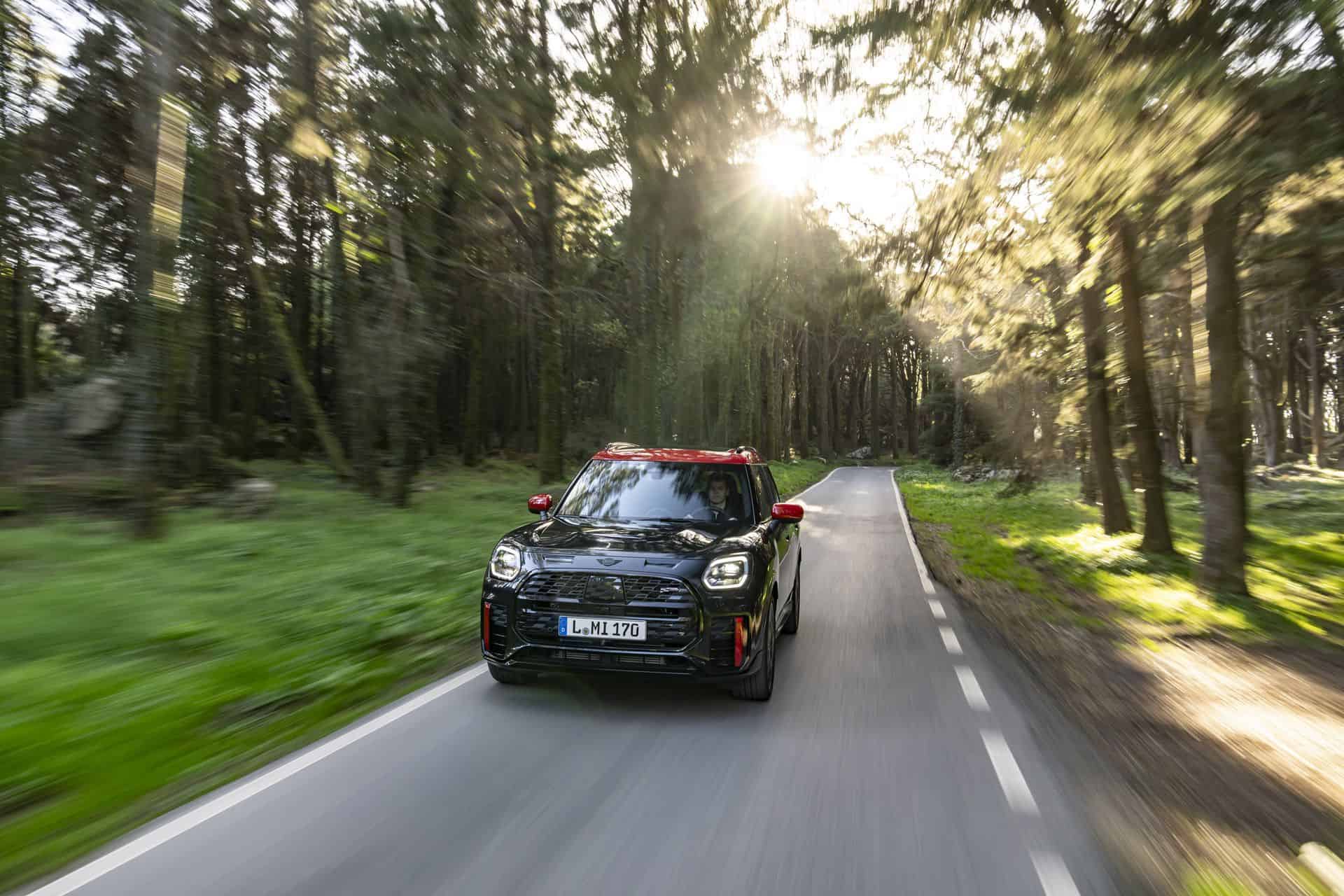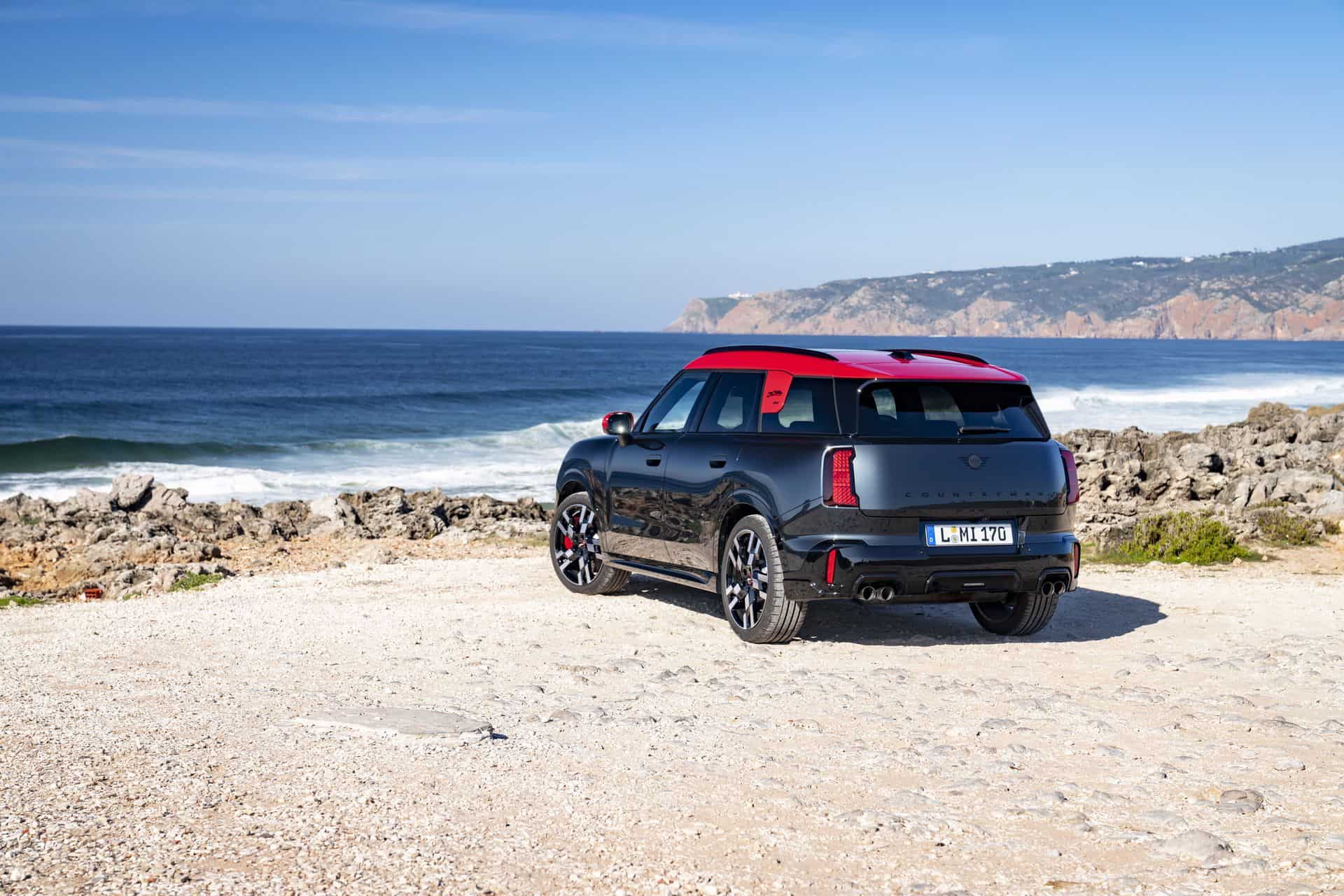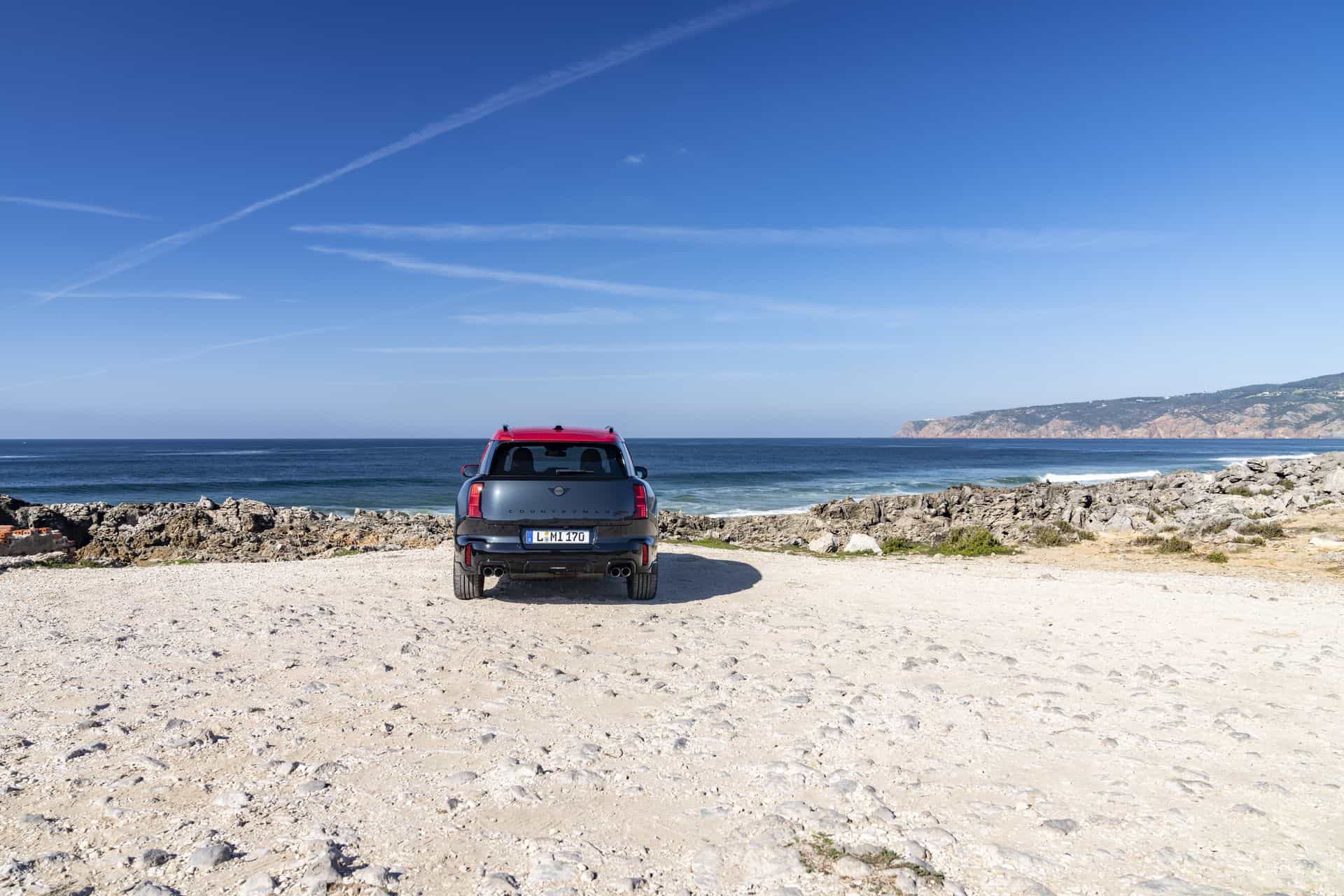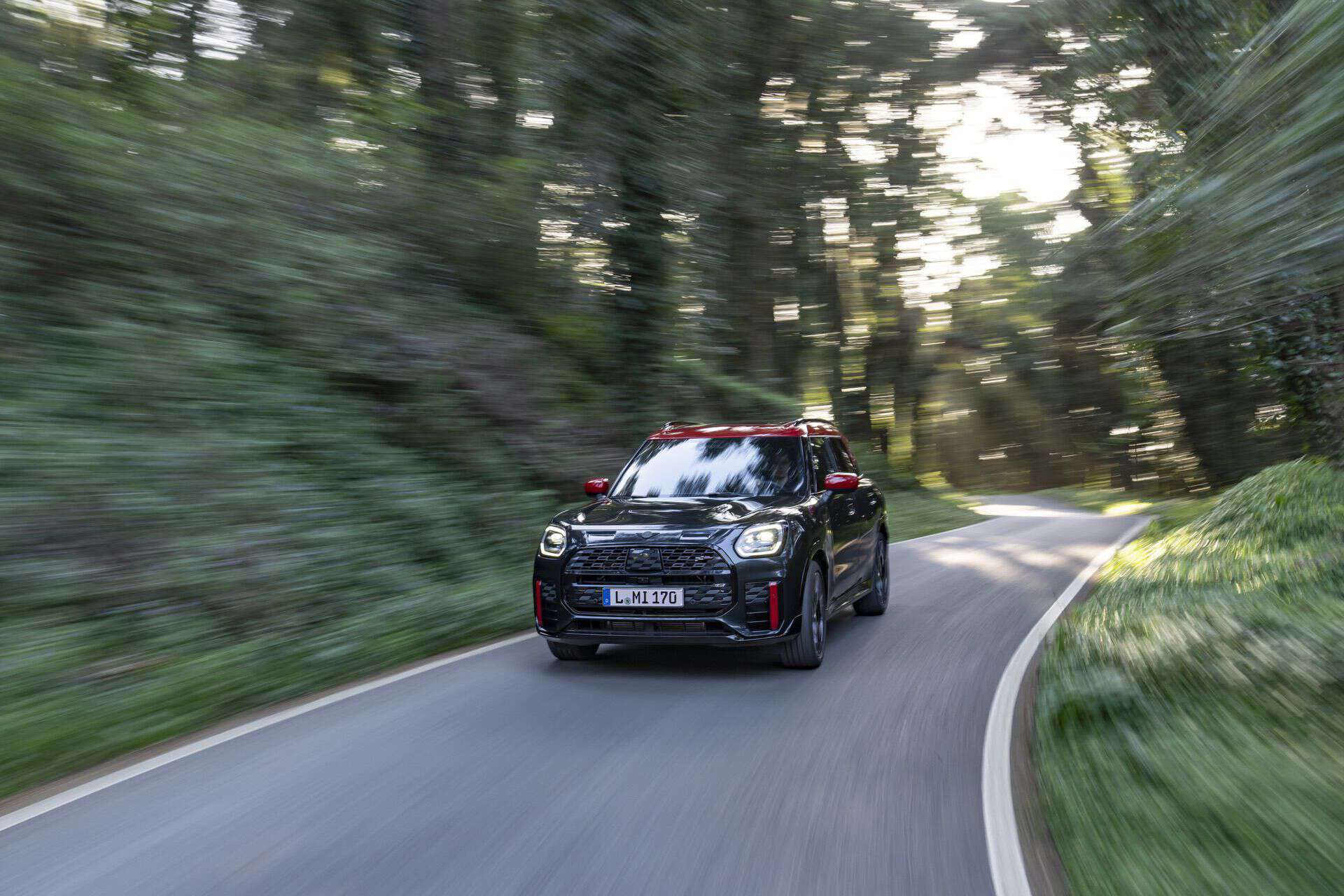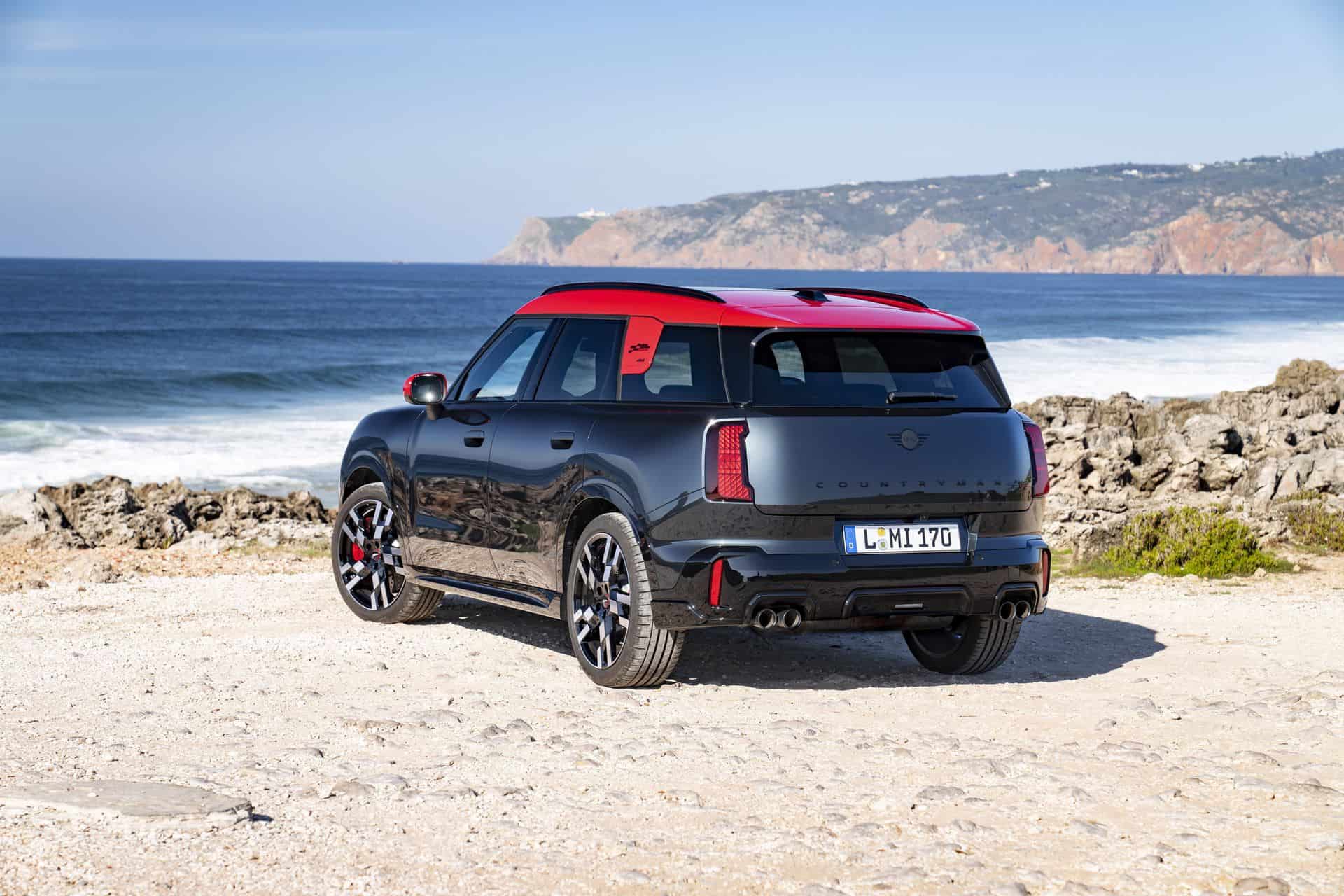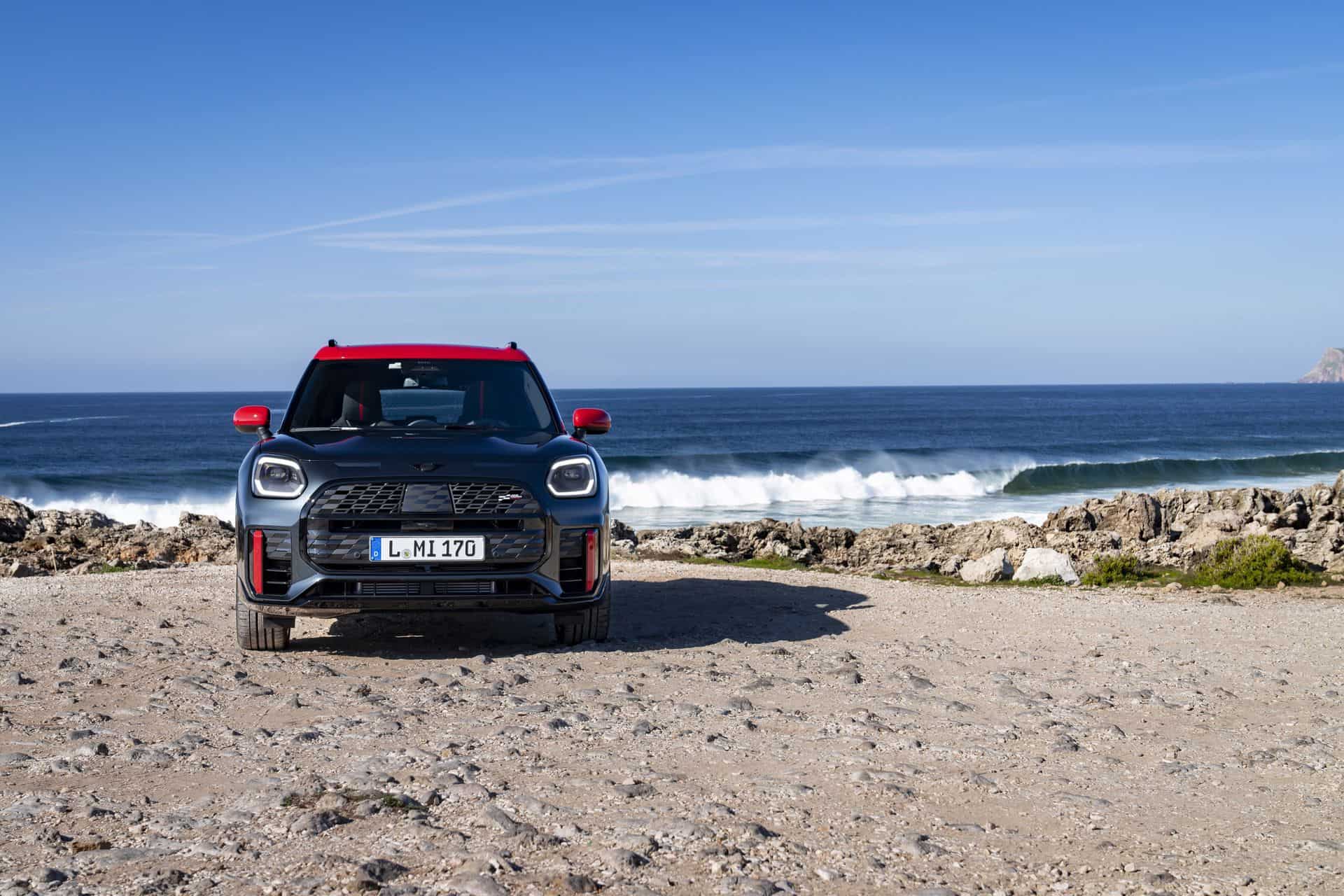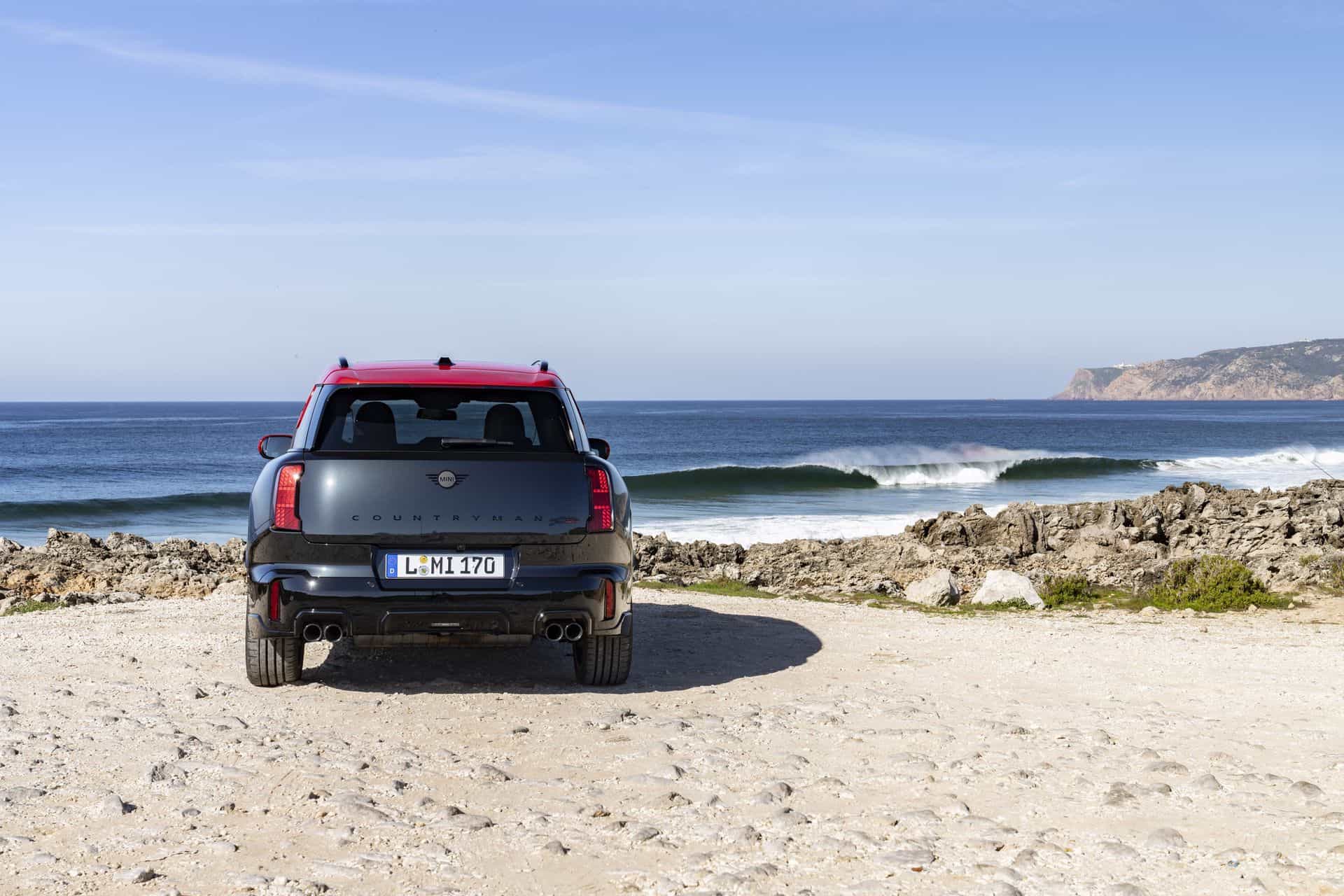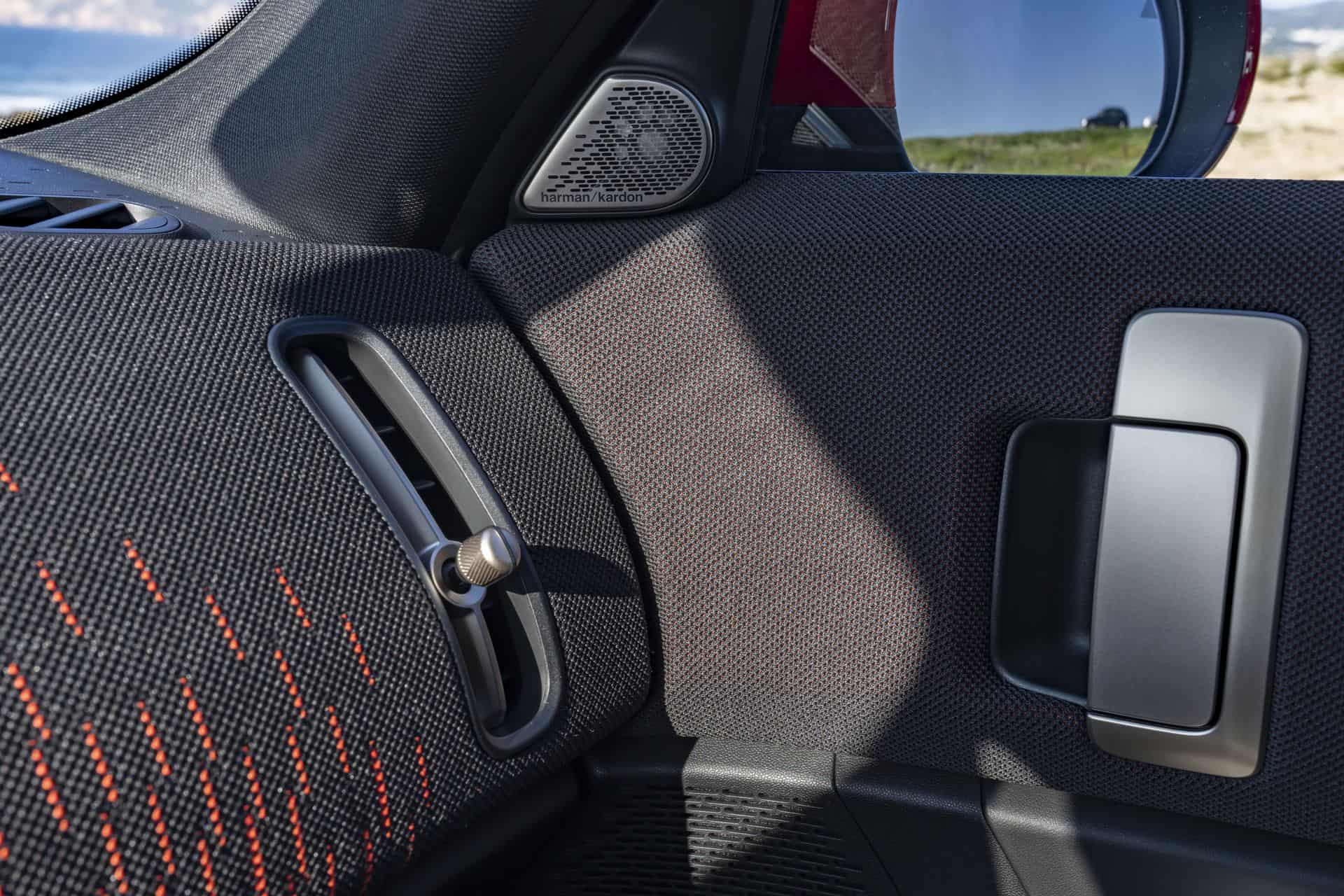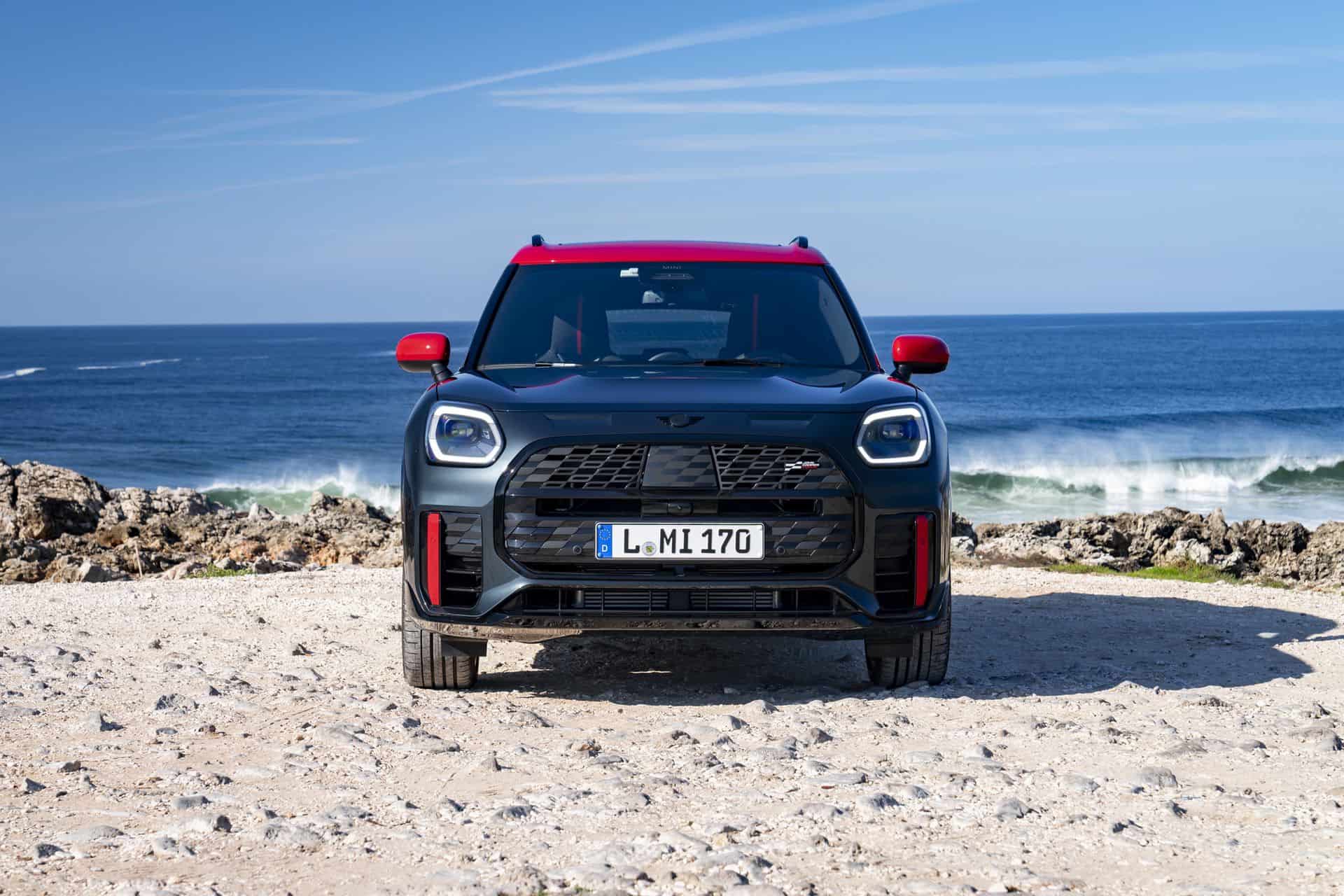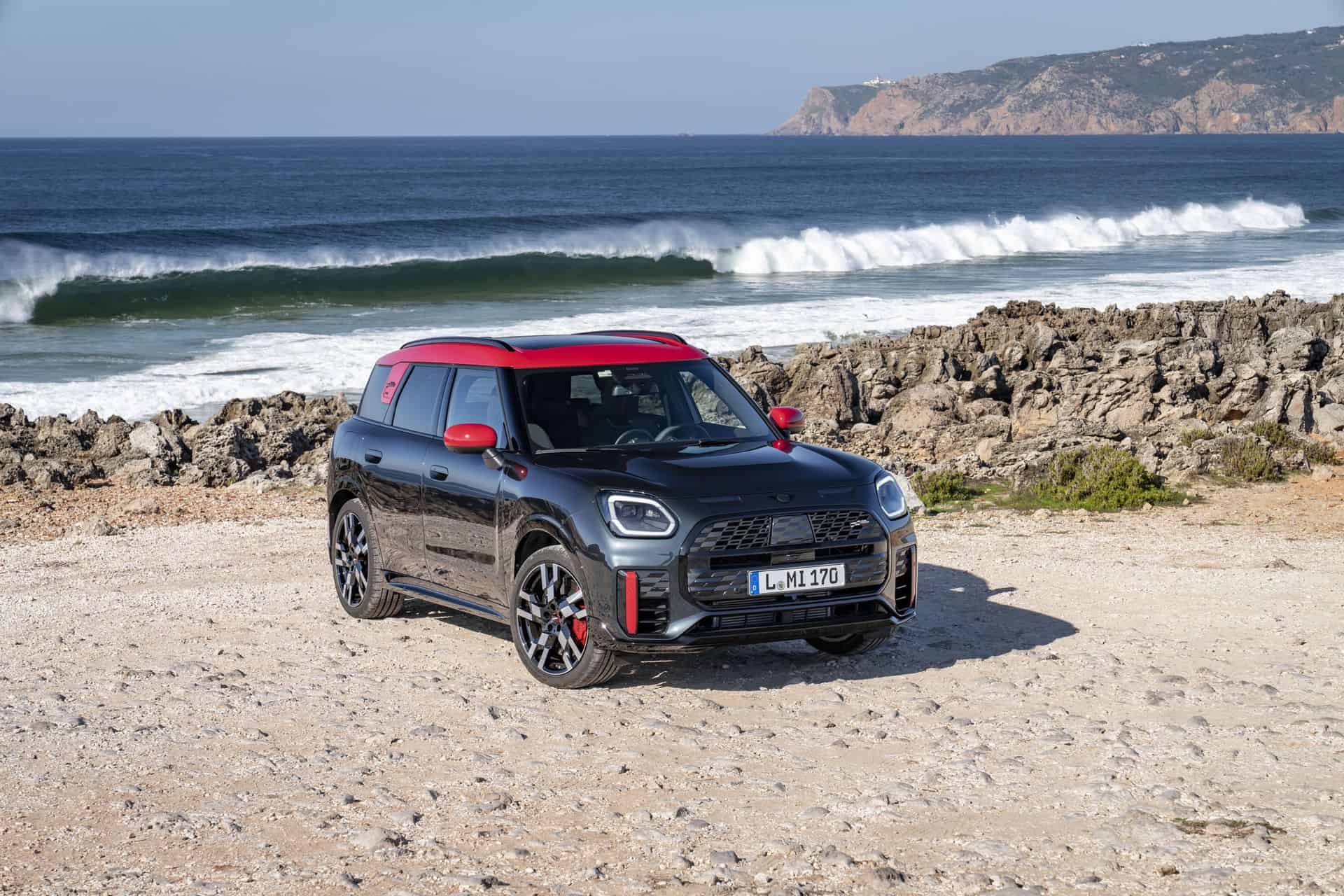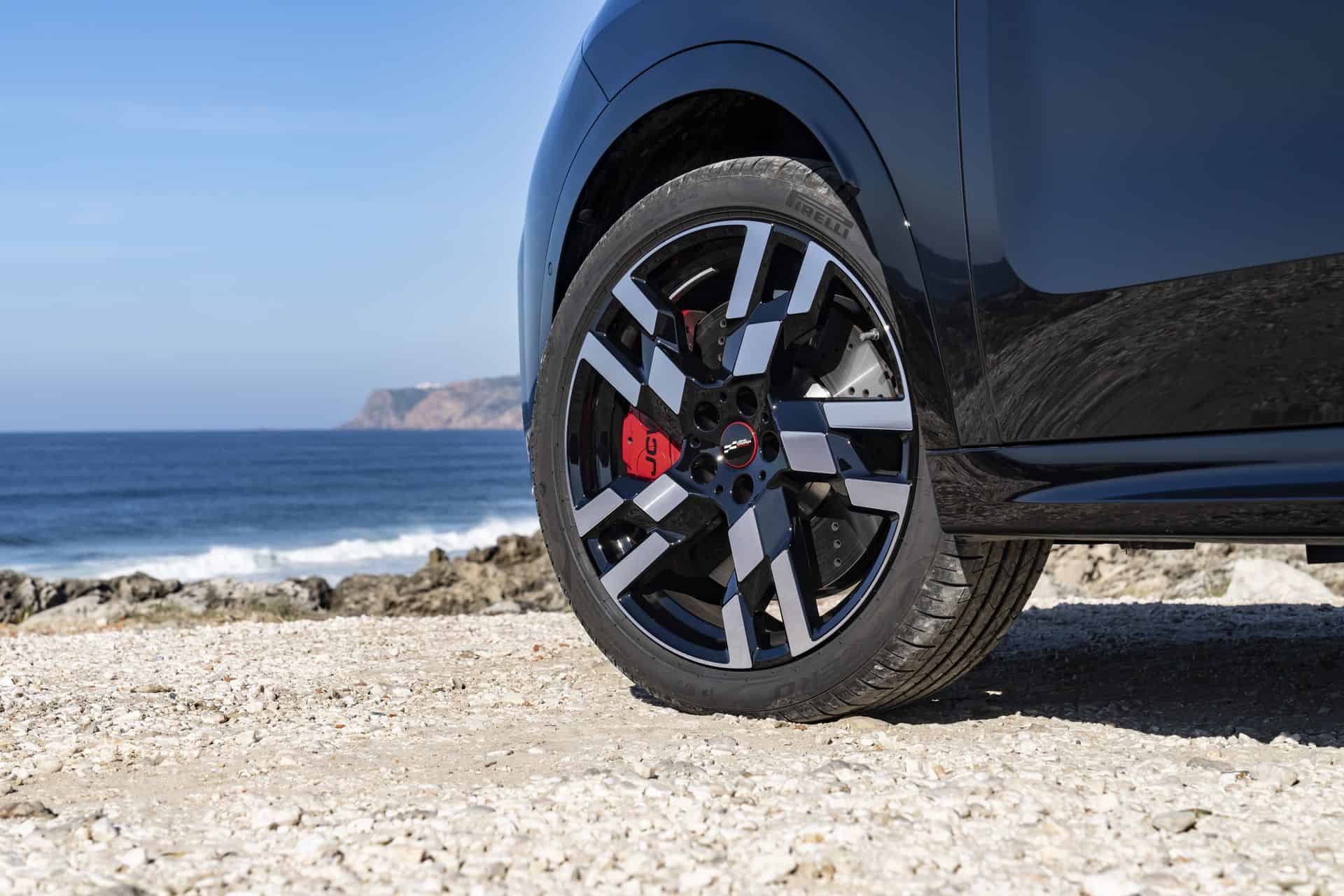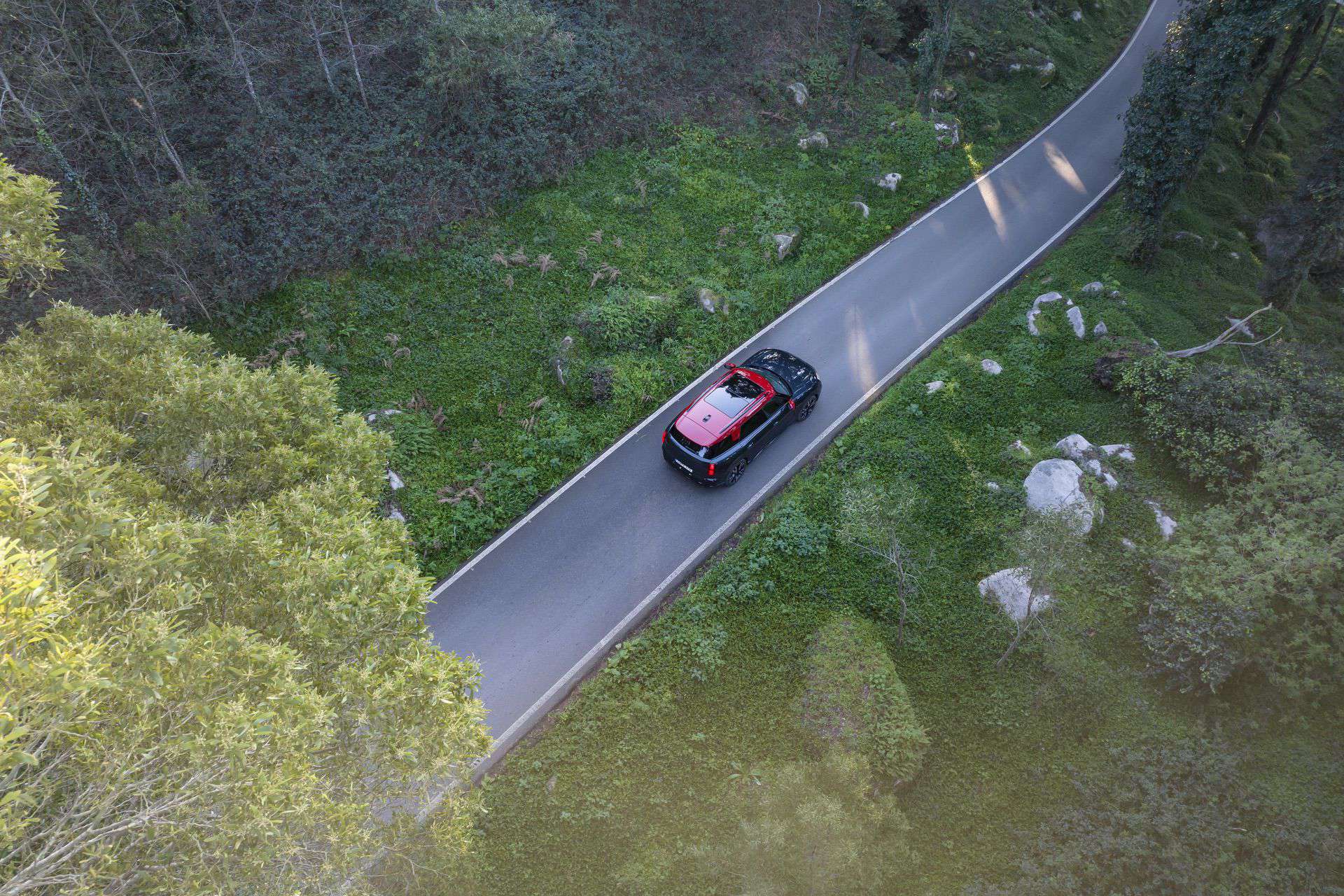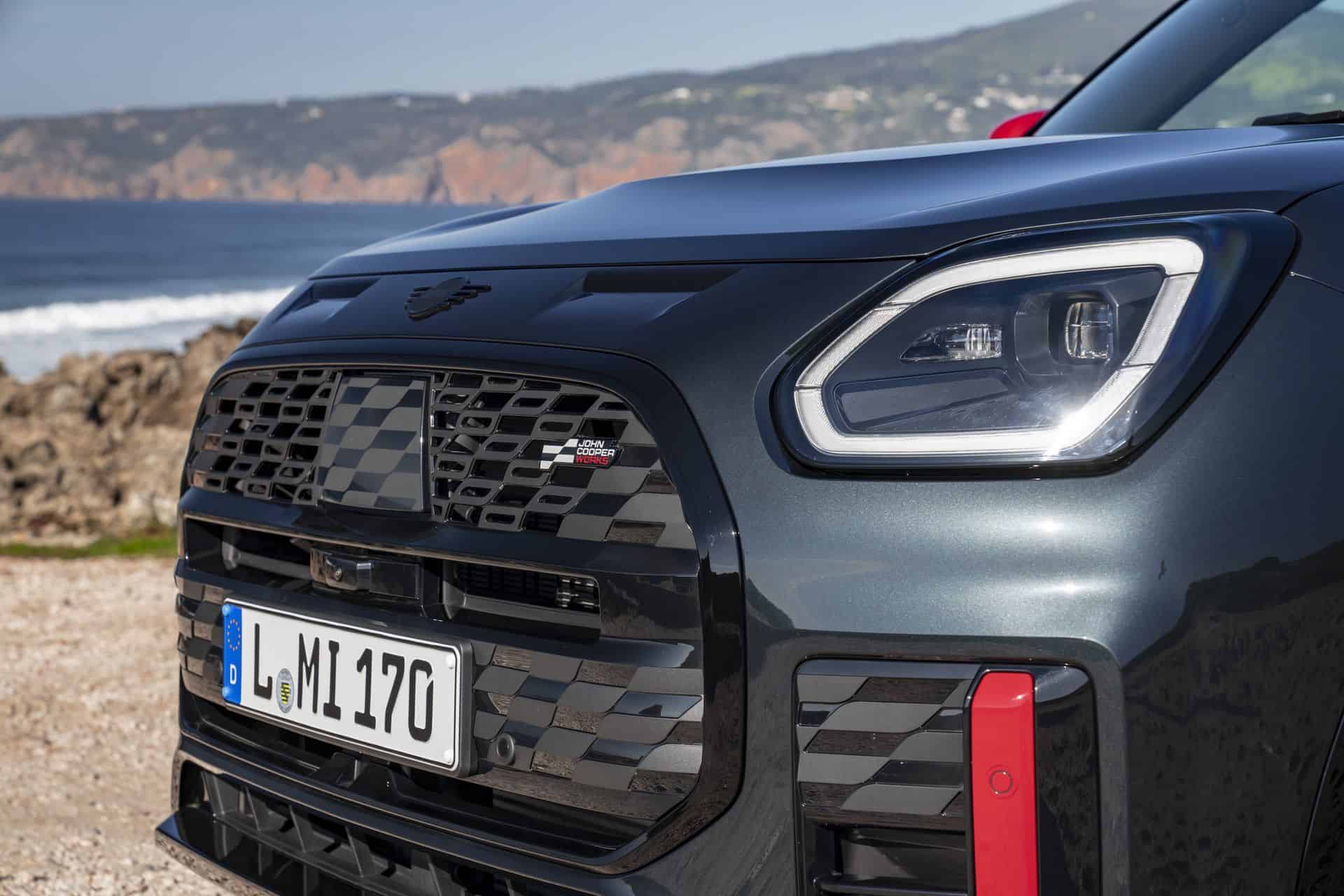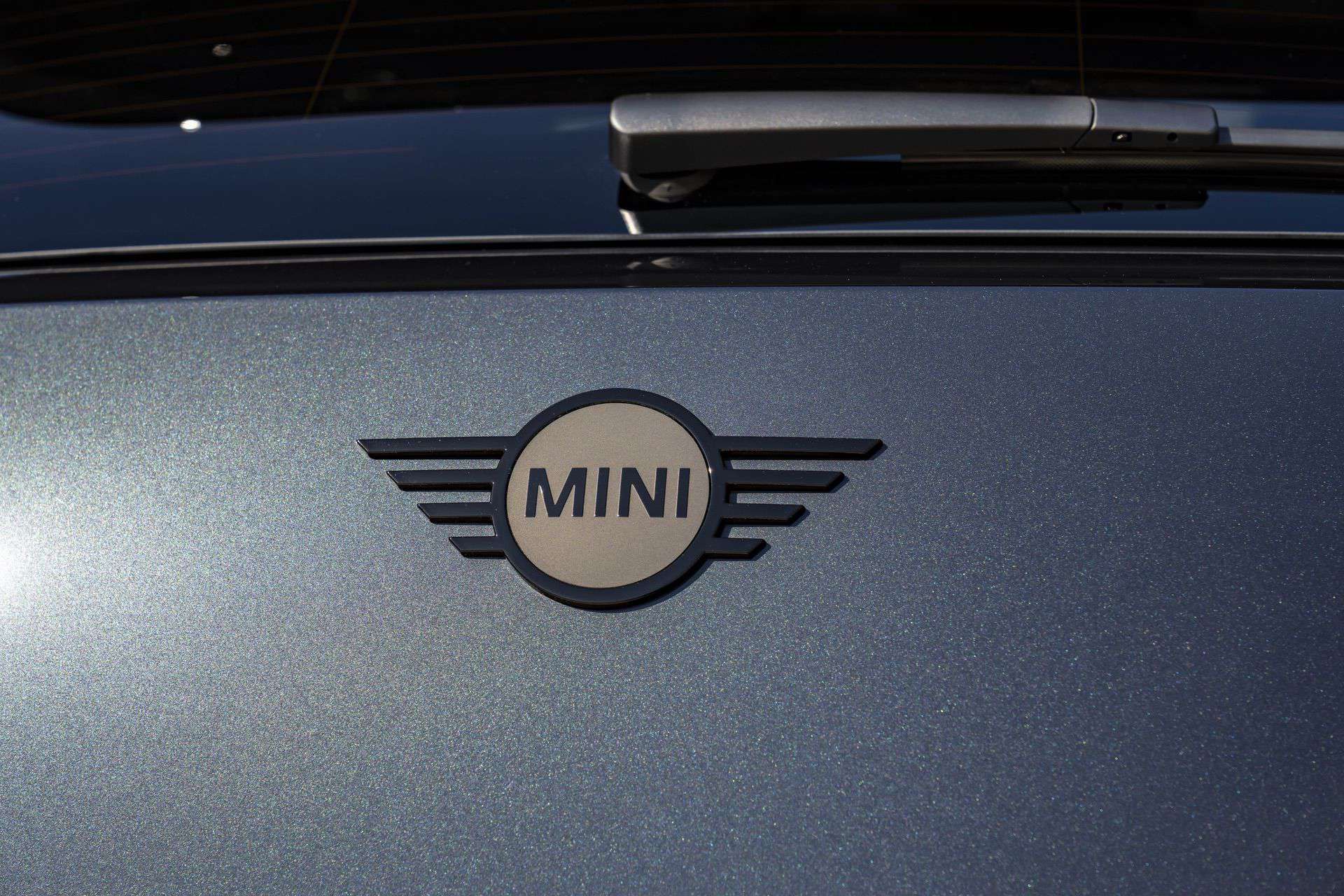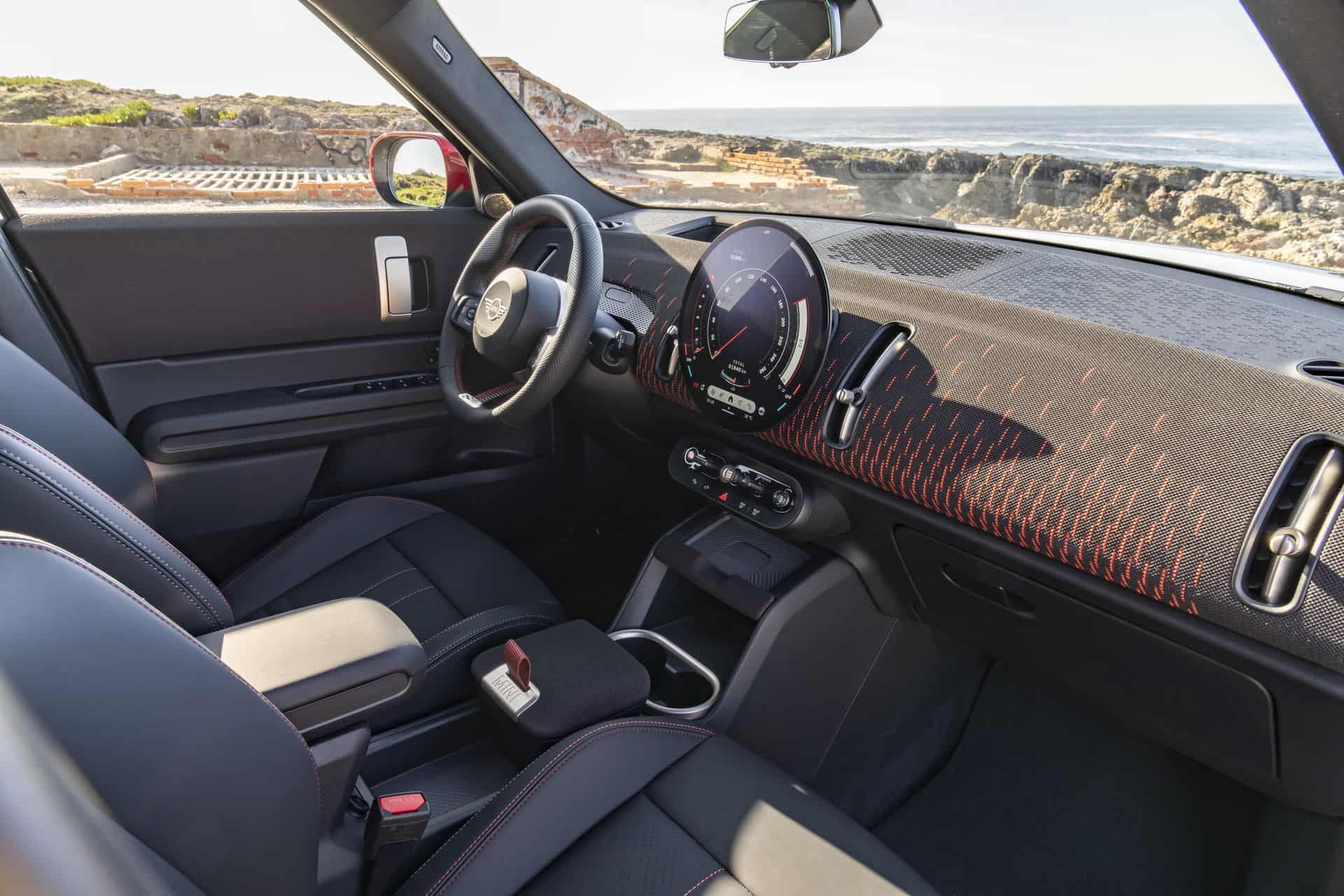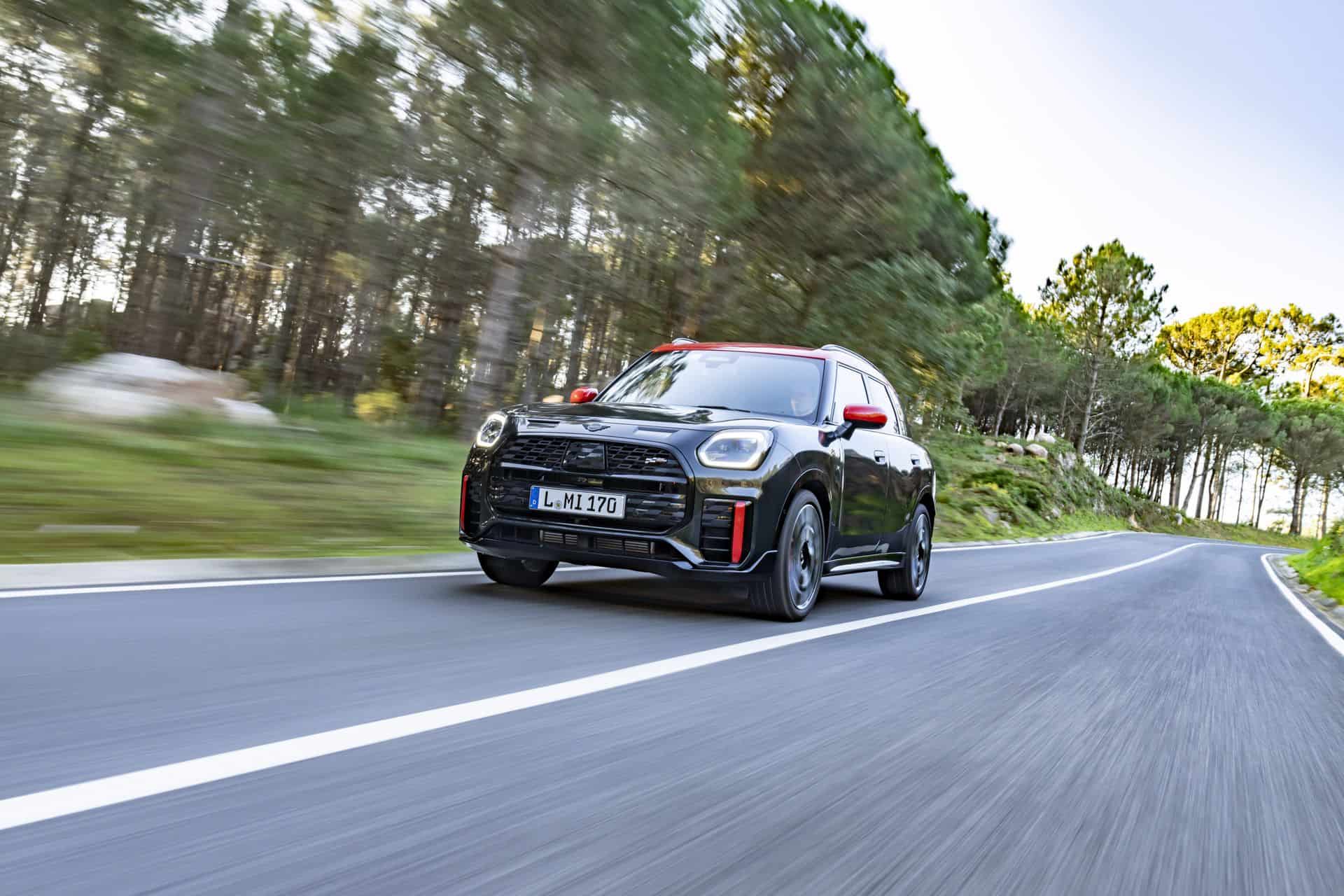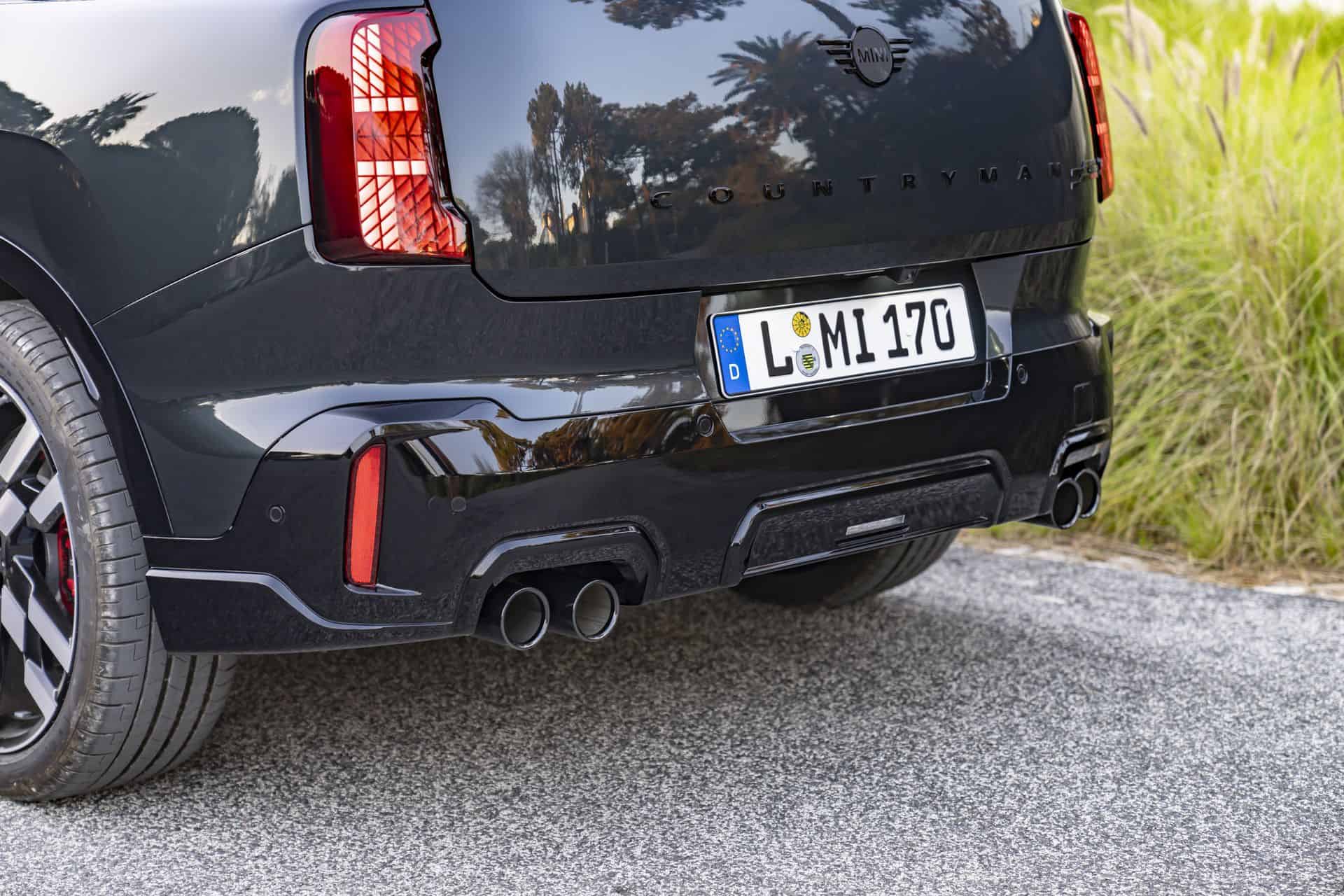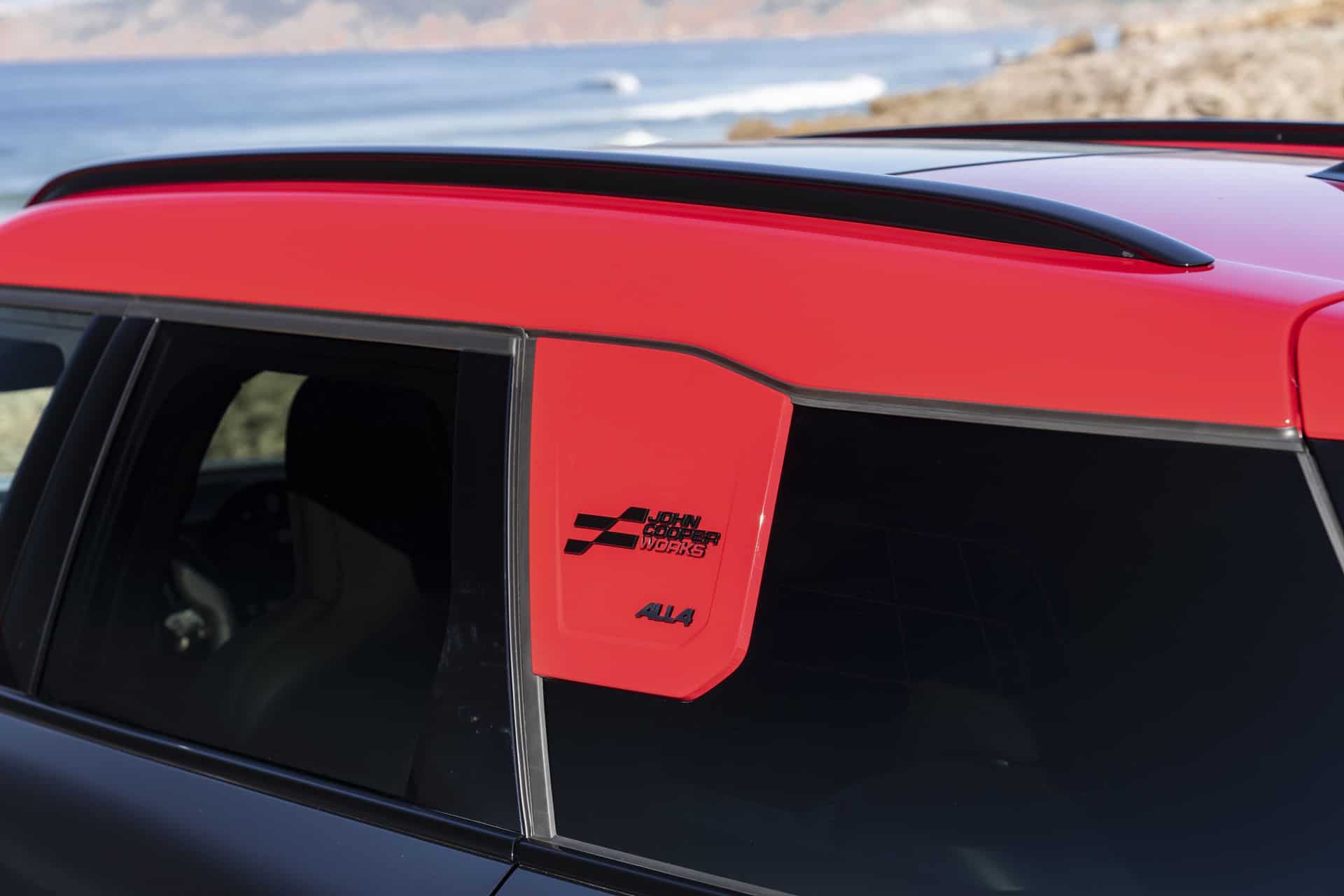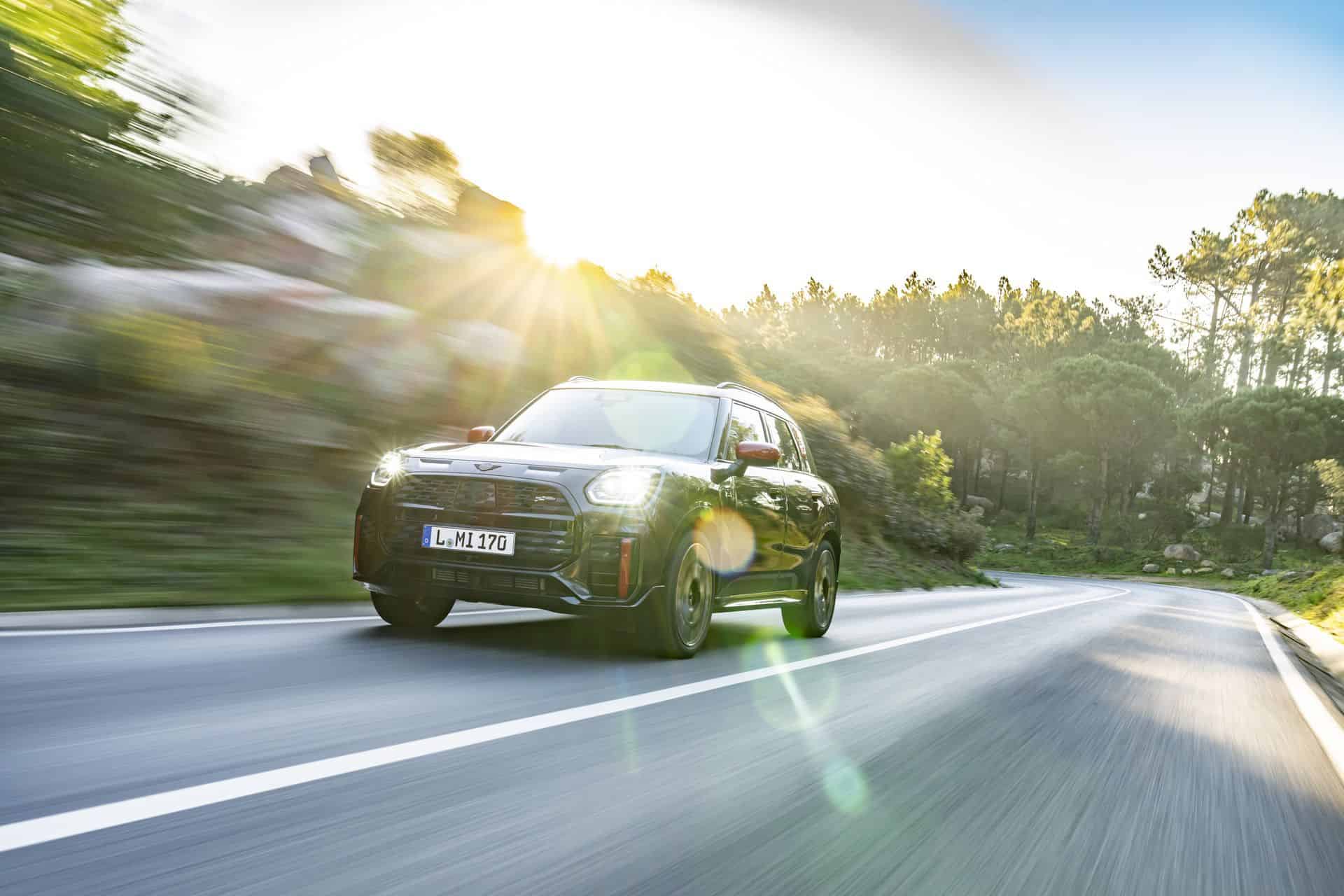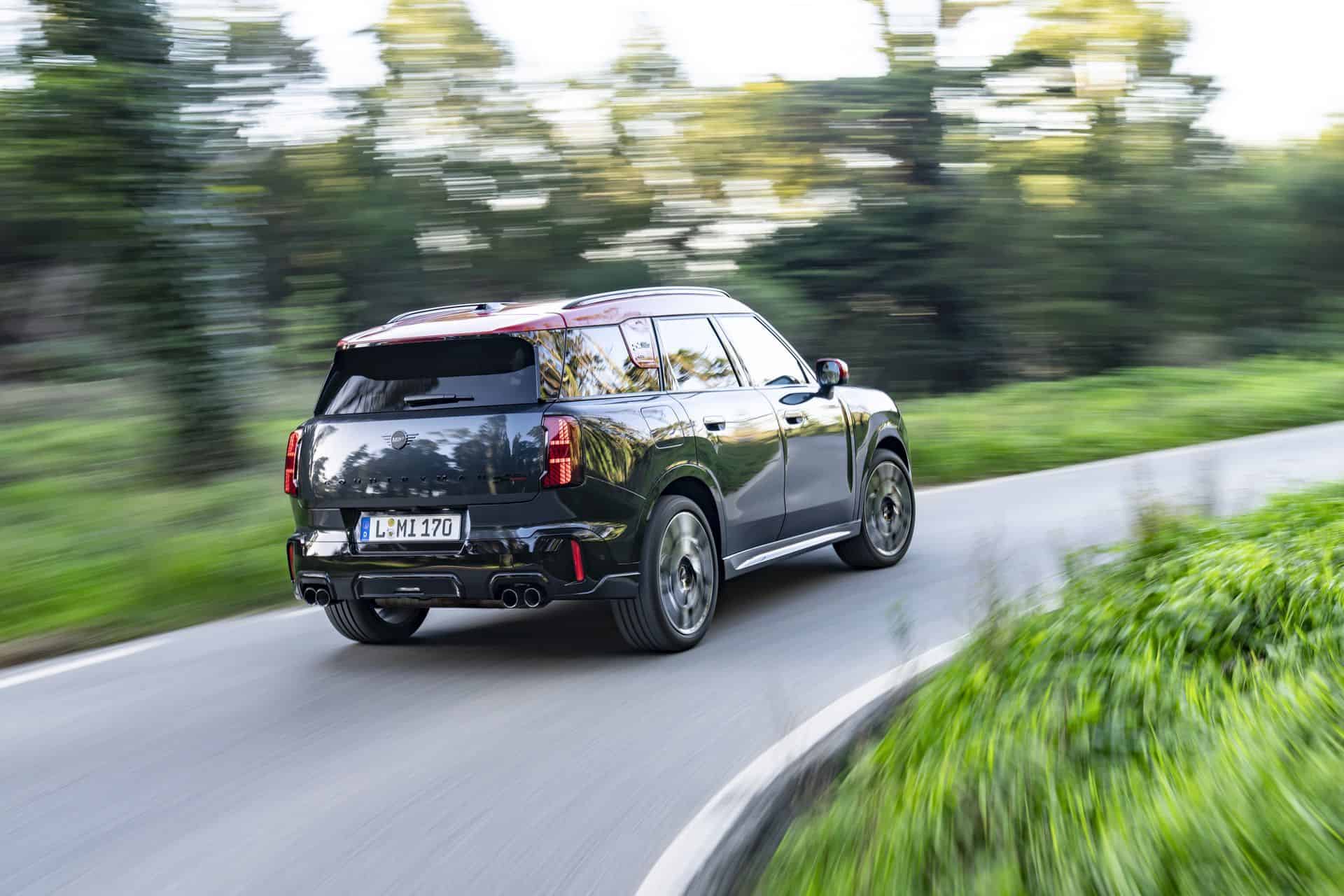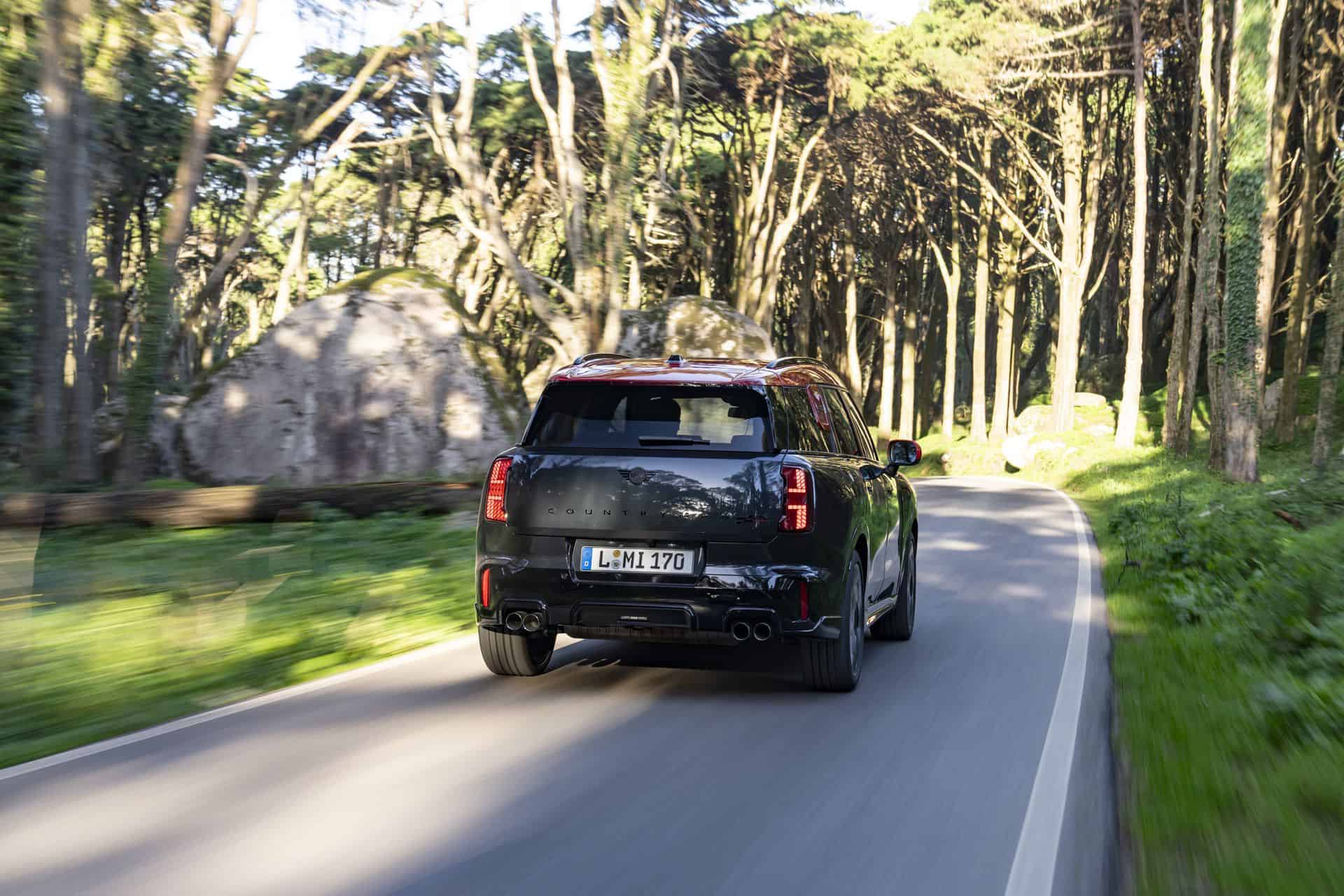2024 marks a significant milestone for MINI, as the British brand is set to unveil its latest range of vehicles following years of minor updates. Leading the charge is the all-new 2025 MINI Countryman John Cooper Works, which is not only larger but also more powerful than its predecessors. The Countryman has emerged as MINI’s top-selling model in the United States in recent years, owing to its status as the most spacious and largest option in the MINI lineup. But the new U25 Countryman family elevates size to new heights. Thus, I traveled to Lisbon, Portugal, seeking not only some much needed sun (which, ironically, turned into an encounter with rain) but also to explore the notion that bigger may indeed be better, in some cases.
Bigger Than Before
The 2025 MINI Countryman stretches at 4433 millimeters (174.5 inches) long, 1843 mm (72.5 in) wide, and 1656 mm (65.2 in) tall, with a wheelbase measuring 2692 mm (106 in). That makes it slightly shorter and just about as wide as the mechanically related BMW iX1 while being a smidge taller than the Bavarian electric crossover. Now in comparison to the previous F60 Countryman, the new U25 crossover is nearly 5 inches longer, 2 inches taller and 2 inches wider. Of course, with the size increase comes the weight penalty: 3825 lbs vs 3704 lbs.
While the U25 MINI Countryman John Cooper Works has made significant gains in practicality and space, the question remains: does it maintain the iconic MINI driving experience? Let’s dive in and discover!
Slightly More Power and Better Sound
The B48A20T2 turbocharged 2.0-liter gasoline mill is rated at 296 horsepower in Europe, exactly the same as the BMW X1 M35i and X2 M35i sold on the Old Continent. But in the U.S., the local version has 312 hp, just like the two M Performance crossovers available in North America where there are less stringent emissions regulations compared to the European Union. There is also a boost feature which can be activated via the paddle shifter on the steering wheel giving you 19 hp (14 kW) for 10 seconds at a time. Despite being the same engine as in the X2 M35i I drove a day earlier, the software tuning on the Countryman JCW was different, fitting to the character of the MINI.
Naturally, being an ALL4 Countryman, power is distributed to all four wheels through a 7-speed dual-clutch transmission. Despite sharing a similar transmission with the BMW X1 and X2, it has been specially software-tuned for the JCW model to enhance its performance. Luckily, MINI appears to have addressed the notable lag experienced during engine startup when releasing the brakes, a problem previously seen in the X1.
New Transmission and Four Exhaust Pipes
The 2025 MINI Countryman John Cooper Works, with its new transmission, delivers a torque output of 400 Nm (295 lb-ft), a decrease from the 450 Nm (332 lb-ft) found in the previous F60 Countryman JCW. Despite this reduction, it still achieves a 0 to 62 mph acceleration in 5.4 seconds, which, while marginally slower than the F60 JCW’s 5.1 seconds, remains quick. Top speed was increased, though, to 155 mph from 140 mph.
A key appeal of the Countryman JCW is its distinctive sound, enhanced by the U25 JCW’s four exhaust pipes connected to a single muffler. However, the European-spec model I tested featured a neutered sound profile, attributed to the Otto Particle Filter (OPF) regulations. Despite this, the Go-Kart Mode did offer a more appealing exhaust note. I’ll withhold my final verdict until I can experience the U.S.-spec models, which are expected to deliver a fuller sound experience.
Bigger Brakes and Wheels
My car ran on 20 inch John Cooper Works Flag Spoke 2-tone with Pirelli P Zero PZ4 245/45R-20 performance tires, so thanks to the larger wheels, it also received the sportier brakes which are only available for the JCW models. The braking system on the U25 Countryman John Cooper Works features a four-pot rotor design, with the rotors being vented and measuring 380 mm in diameter. This is an upgrade from the previous JCW’s non-vented 360 mm discs. The 4-piston monoblock fixed caliper (19” Brembo) is painted in chili-red with M3/M4 brake pads. The rear is a single-piston caliper (16” ZF) with saddle-integrated parking brake.
The new brakes system is not only engineered to provide superior stopping power but also to offer improved feel and feedback to the driver. Additionally, the vented nature of the rotors ensures more effective heat dissipation, significantly increasing resistance to brake fade. This comprehensive setup guarantees a more responsive and reliable braking experience, essential for both everyday driving and performance situations.
Suspension and Steering Tweaks
Being a John Cooper Works model, it’s expected that MINI would equip it with a distinct suspension setup. Accordingly, the 2025 MINI Countryman JCW is outfitted with a unique combination of adaptive dampers and springs tailored specifically for it. Fun fact: this is the Adaptive M suspension tuned in JCW style. Next, the steering benefits from a customized software map, enhancing its racier behavior as anticipated. The primary goal of these enhancements is to ensure that, despite its larger size, the Countryman JCW retains the quintessential MINI character—offering that exhilarating go-kart-like driving experience.
But does it?
Driving Experience
It’s been a while since I last drove the F60 MINI Countryman JCW, yet my memories are vivid enough to draw a comparison. From the moment I started the car, the impact of the Otto Particle Filter (OPF) on the auditory experience was noticeable, significantly muting what could otherwise be a more vibrant sound. The B48 engine, in its essence, performs as expected, delivering a decent sound, despite today’s heavily regulated environment. Unfortunately, this means it doesn’t resonate with the same vigor as it once did. However, I find it difficult to fault MINI for these changes, as they are largely regulatory mandates. On a brighter note, I’m looking forward to the U.S.-spec cars, which promise a richer sound, much like the difference between the U.S. and EU versions of the X1 M35i.
The designated route begins by winding through several city centers near the Atlantic Ocean around Cascais, offering an ideal setting to evaluate the everyday maneuverability of this sizable crossover. The Countryman has evolved into a true crossover, boasting considerable interior and cargo space. It’s immediately apparent that this iteration of the Countryman has matured, adopting a more rugged design that feels quintessentially British, more so than any of its predecessors. However, this evolution comes at the cost of the previous Countryman JCW’s charm, which seamlessly blended MINI’s iconic go-kart-like agility with the utility of a compact crossover SUV.
Handles Like A Larger Crossover
In its current form, the 2025 MINI Countryman JCW behaves more like a highish-performance SUV, attempting to mask its bulk and weight with a bit more power and various chassis enhancements—a development that was somewhat expected. The B48 engine, while reaching its performance ceiling with this model’s heft—much like it does in the BMW X1 and X2—requires more time to amass the necessary power and torque to propel the larger vehicle. Therefore, everyday driving feels somewhat less responsive than in previous models. Although the transmission effectively minimizes lag, concealing the JCW’s weight remains a challenge, especially in stop-and-go traffic.
But things change once you find some open roads. And thankfully, the Lisbon area has plenty of those. The new U25 Countryman JCW certainly comes to life once it hits the bends. This is particularly true when engaging the Go-Kart Mode, which offers a distinct driving experience. According to MINI, the Go-Kart Mode fine-tunes the chassis setup for enhanced driving dynamics, featuring quicker throttle response, increased steering weight, and a specialized DSC program tailored for a more engaging drive. Additionally, you still have the flexibility to customize this mode, adjusting several key settings, like steering and chassis.
Precise Shifting
The shifts are quite precise and smooth at higher speeds, and of course, if you use the shift paddles, then you can easier control the power band. And that’s the trick with the B48 engine: as long as you keep in the right RPM band, the little engine will deliver. The sound is also better in the Go-Kart modem, thanks to the redesigned flaps. There is certainly more body roll than in the previous Countryman JCW, but that’s also to be expected because physics…
The suspension is firm, but tolerable, yet on bumpy roads, you can definitely feel the imperfections in the pavement, especially on low profile tires. While the performance-oriented suspension prioritizes handling, the ride quality remains reasonably comfortable for daily driving. But ultimately, ride comfort perception is subjective, so if you prioritize a smooth ride over ultimate sportiness, then you can always switch into another Experience Mode.
Steering Could Be Slightly Better
The steering feedback is is precise and accurate – considering the weight of the car – but of course, in some driving situations it can feel a little bit numb. Turn-in at higher speeds is better though, thanks to the wider track and bigger tires. The new Countryman JCW also feels stable and planted on the road, even when pushed hard. Once you get into the 1200-1500 rpm range, the max torque kicks in. It’s the torque curve that makes the B48 feel powerful in these driving situations. And feels a lot more like a proper JCW.
Does It Have The Go-Kart Driving Experience?
In some ways, the iconic MINI driving experience is slowly losing its identity in the Countryman models. While it may seem like I’m making excuses for the brand, the reality is that priorities have evolved over the years. The premium crossover segment now places greater emphasis on space, practicality, and luxury amenities, at the expense of the driving experience. This shift has been largely influenced by markets such as the U.S., which have been steering this change for years, if not decades. Additionally, stringent crash and pedestrian safety regulations have contributed to heavier vehicles, significantly altering their driving dynamics.
So, the unmistakable go-kart feel of older MINIs has been inevitably slightly changed. The previous F60 Countryman JCW remains a testament to that era, albeit at the cost of the advancements mentioned earlier. Ultimately, the choice boils down to this: Do you seek a mature MINI that blends the sophistication of a premium crossover with the JCW’s zest, or does the purity of the driving experience trump all else for you?
Is Bigger Better?
As I’m getting older, my tastes in cars have also shifted towards valuing space and luxury over sheer driving thrill. Yet, the prospect of engaging fun on demand still appeals to me, making the new U25 Countryman John Cooper Works a good option. After spending a few hours behind the wheel, I quickly felt at ease in this modern crossover, though it required rethinking my expectations of the traditional JCW experience. But I’m sure that will be once again corrected by the upcoming MINI Cooper JCW.
In conclusion, I believe MINI has struck gold with the latest generation JCW and the broader Countryman lineup – unless you’re a die-hard MINI fan. The Countryman’s appeal is broader than ever, promising to attract a diverse range of new customers. This will likely be further underscored in my forthcoming review of the Countryman SE all-electric model. And if you were further worried about the MINI sharing too much tech with BMW cars, don’t be! This MINI Countryman JCW feels and drives different than the X1 M35i, and that’s a good thing.
2025 MINI Countryman John Cooper Works
Exterior Appeal - 8
Interior Quality - 8
Steering Feedback - 8
Performance - 8
Handling - 8
Go-Kart Feel - 8
Price Point - 8
8
In conclusion, I believe MINI has struck gold with the latest generation JCW and the broader Countryman lineup - unless you're a die-hard MINI fan. The Countryman's appeal is broader than ever, promising to attract a diverse range of new customers. This will likely be further underscored in my forthcoming review of the Countryman SE all-electric model.




